https://mikawanoyasou.org/kinoko/nikuusubatake.htm; https://gkzplant.sakura.ne.jp/kinrui/syousai/nagyou/nikuusubatake.html
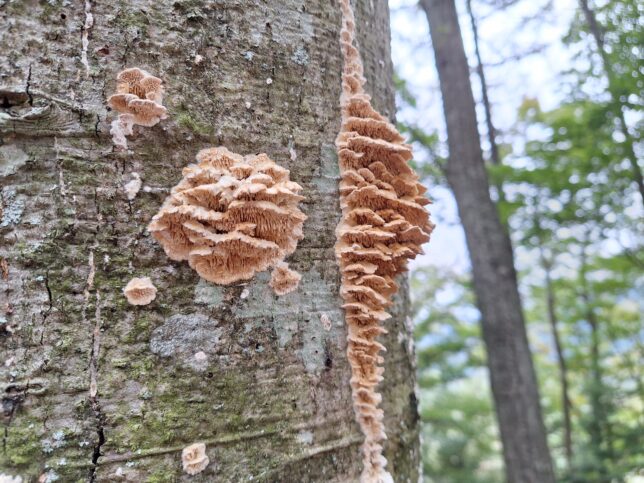
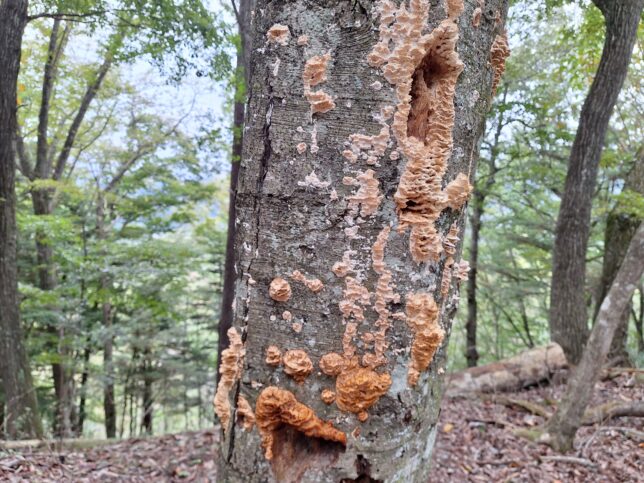
Coriolus brevis, Narusawa-village, Yamanashi, 10/18/2025
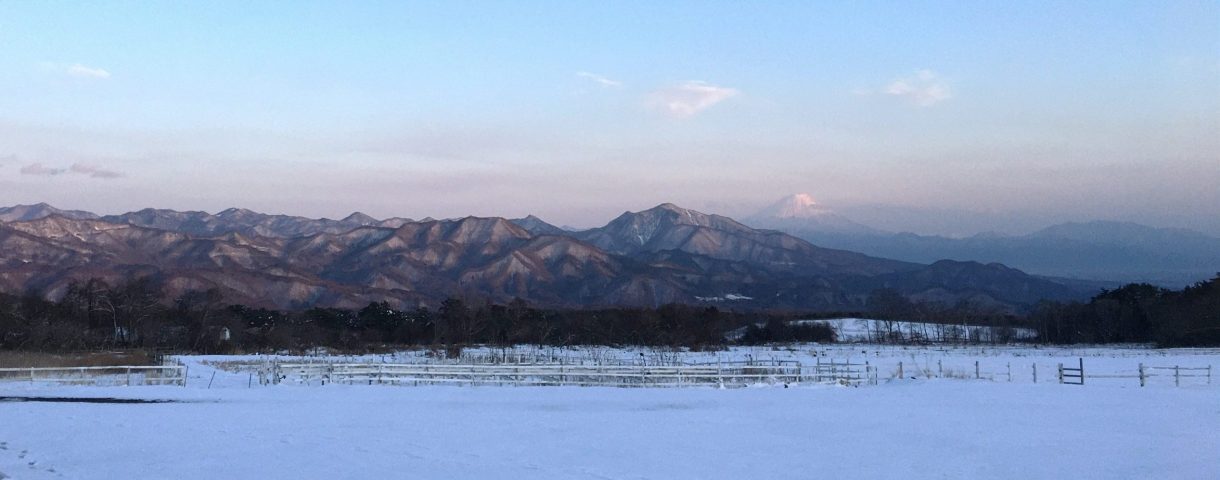
Etsuo Yamamoto _ Certified National Government Licensed Guide Interpreter
https://mikawanoyasou.org/kinoko/nikuusubatake.htm; https://gkzplant.sakura.ne.jp/kinrui/syousai/nagyou/nikuusubatake.html


Coriolus brevis, Narusawa-village, Yamanashi, 10/18/2025



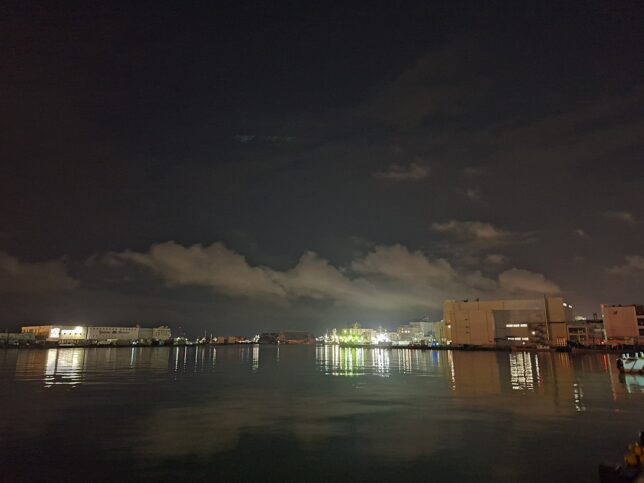
Shimizu Port, Shimizu-ward, Shizuoka-city, Shizuoka, 10/16/2025
Now is a good time to see the autumn colors of summer cypress (Bassia scoparia or Kochia scoparia) plants in Oishi Park in the town of Kawaguchiko in Yamanashi Prefecture, Japan.
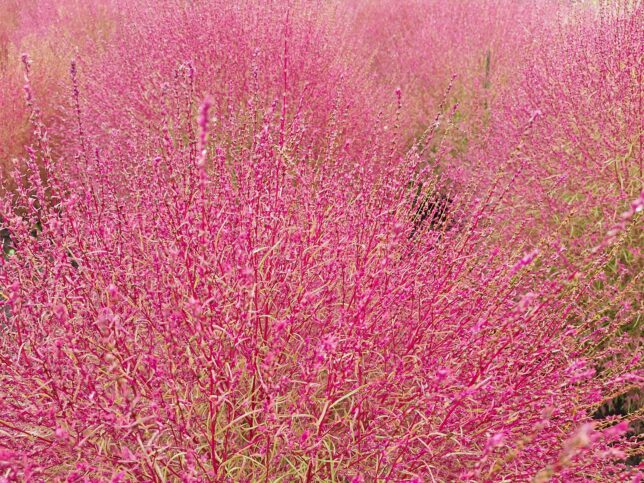
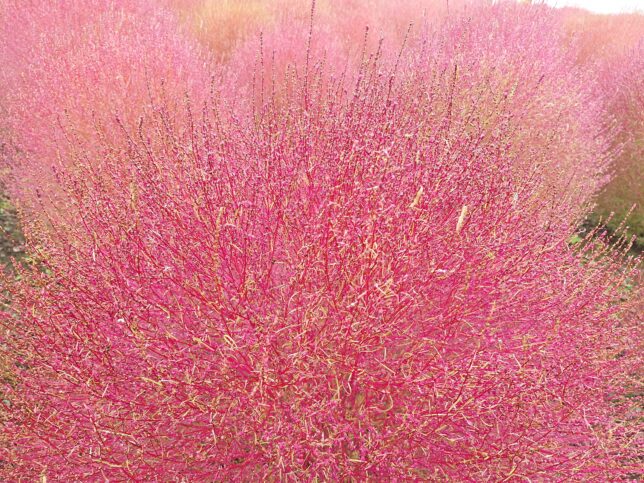
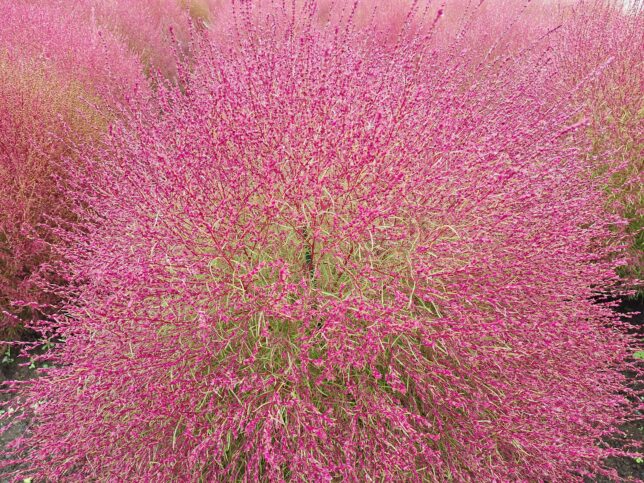
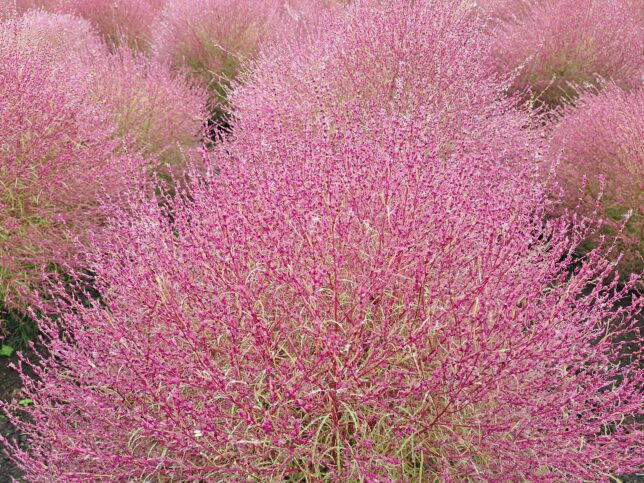
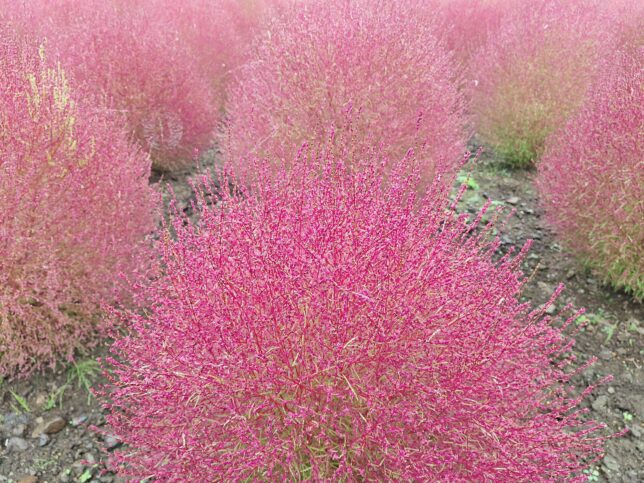
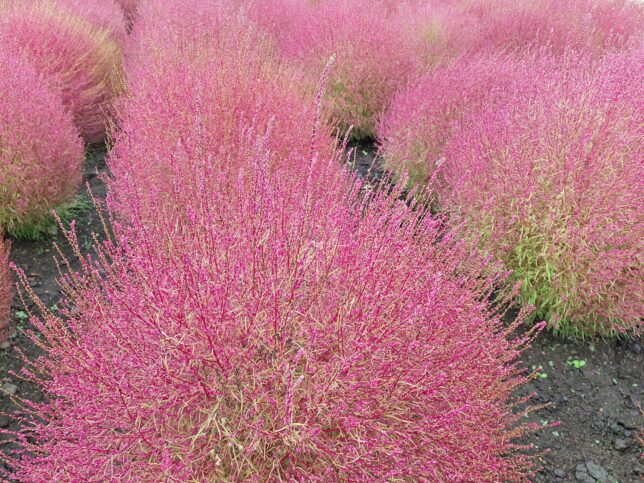
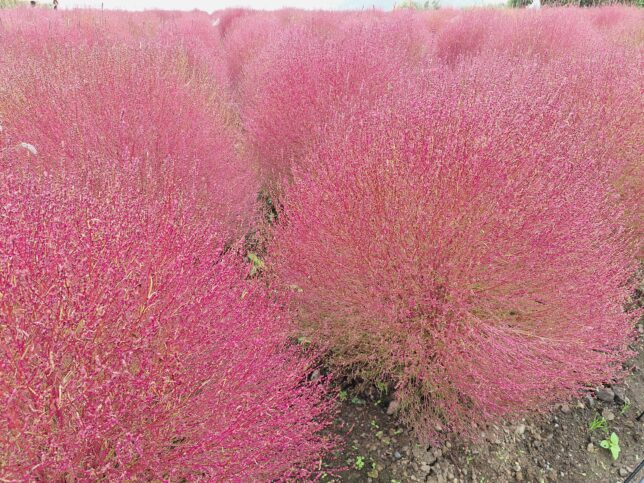
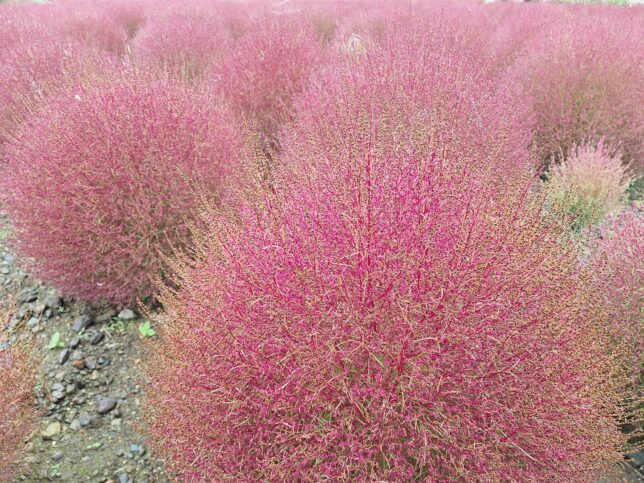
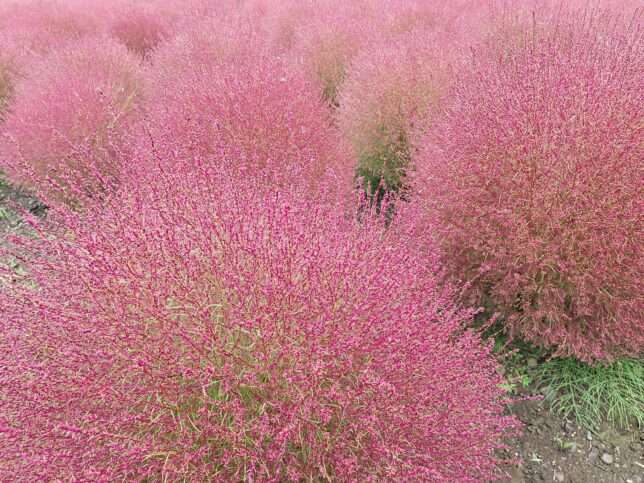
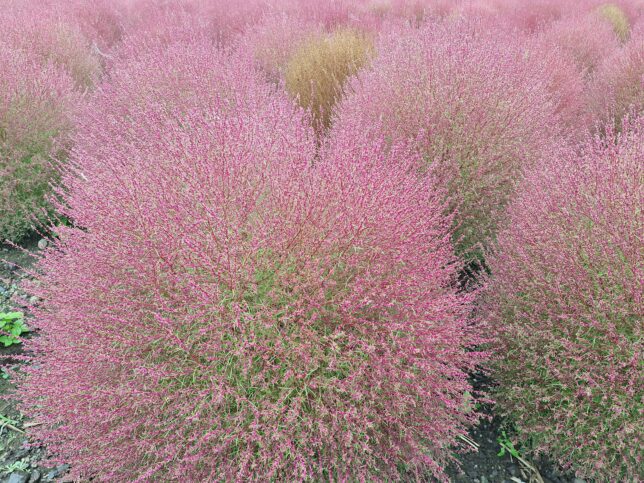
Summer cypress, Oishi Park, Kawaguchiko, Yamanashi, 10/11/2025
https://en.wikipedia.org/wiki/Bassia_scoparia; https://www.fujioishihanaterasu.com/en/
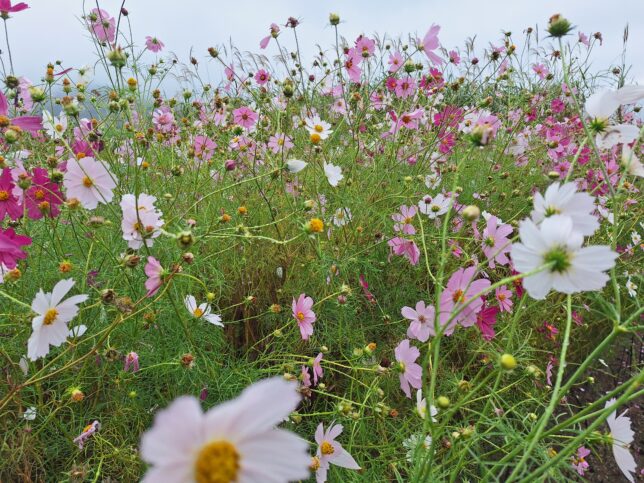
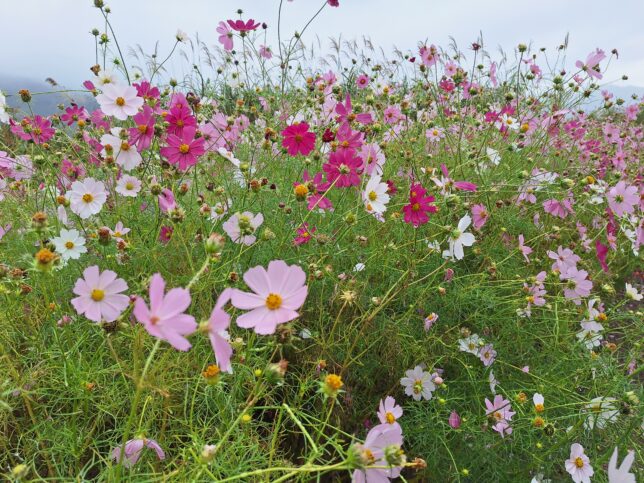
Cosmos flowers, Oishi Park, Kawaguchiko, Yamanashi, 10/11/2025
https://en.wikipedia.org/wiki/Cosmos_(plant)
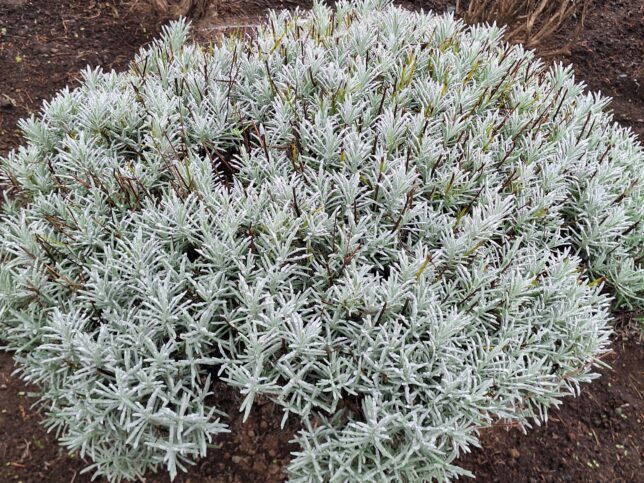
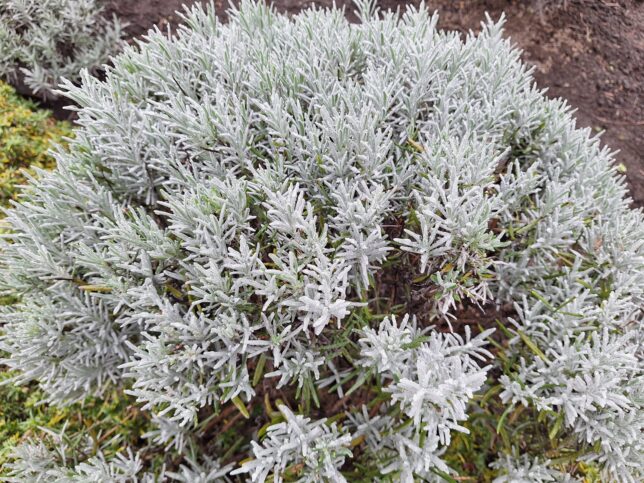
Woolly lavender (Lavandula lanata), Oishi Park, Kawaguchiko, Yamanashi, 10/11/2025
https://en.wikipedia.org/wiki/Lavandula_lanata
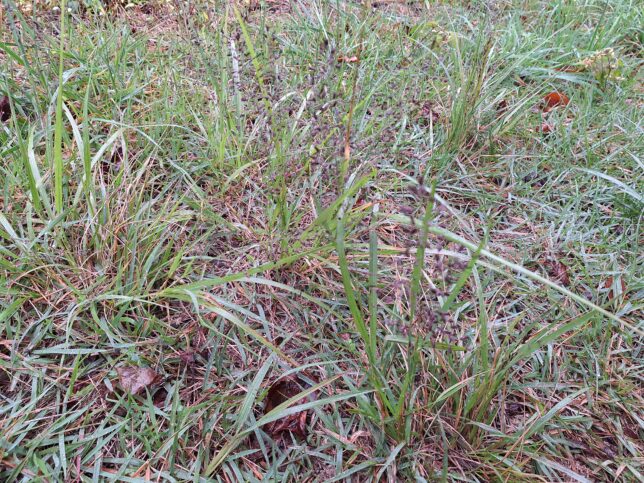
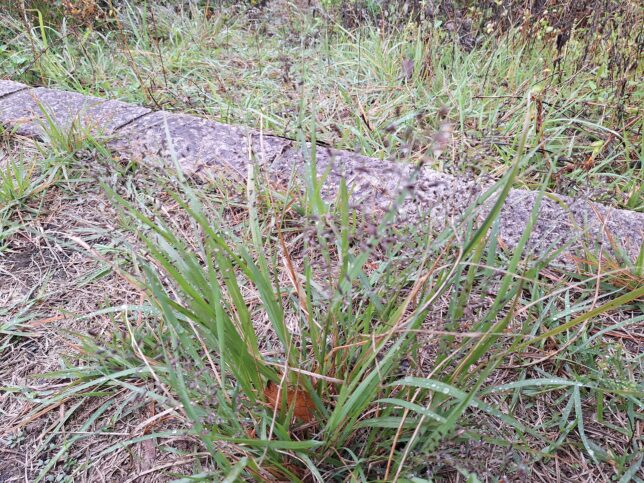
Black bent (Agrostis gigantea), Kawaguchiko, Yamanashi, 10/11/2025
https://en.wikipedia.org/wiki/Agrostis_gigantea
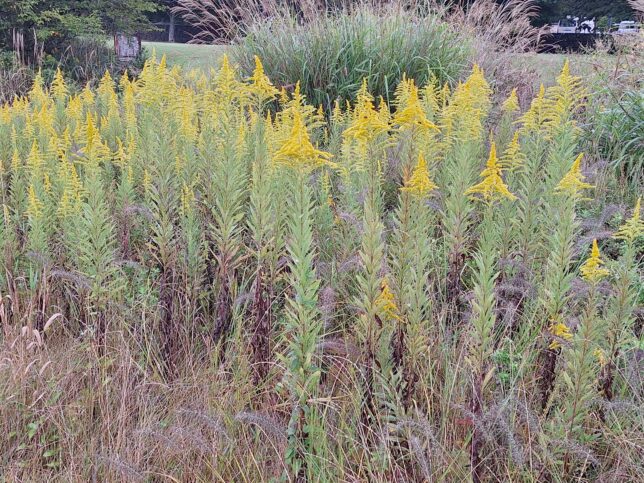
Invasive alien plant species, Tall goldenrod (Solidago altissima), Kawaguchiko, Yamanashi, 10/11/2025
https://en.wikipedia.org/wiki/Solidago_altissima; https://en.wikipedia.org/wiki/Solidago_canadensis
https://en.wikipedia.org/wiki/Invasive_species
Also, please refer to the article on August 19, 2025: Notorious Invasive Alien Plant Species in Yamanashi: https://yamanashietsuo.net/notorious-plant-invasive-alien-species-in-yamanashi/
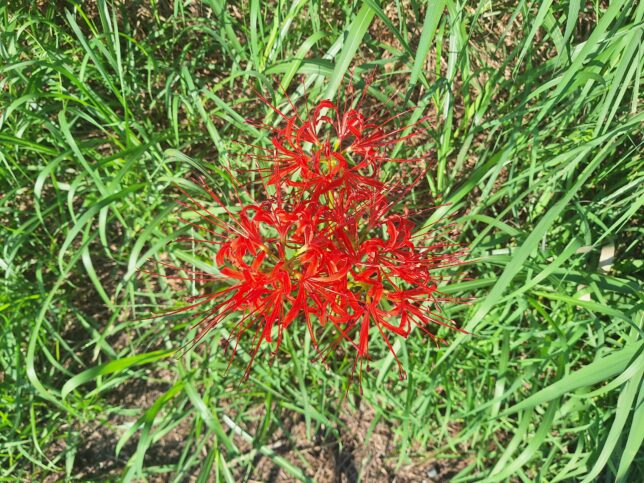
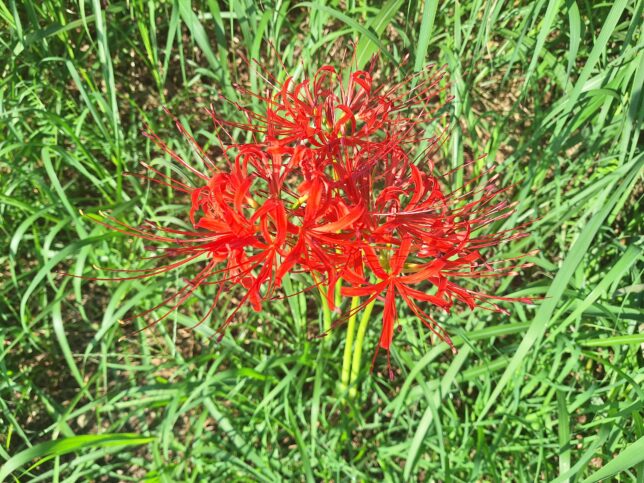
Red spider lily (Lycoris radiata), Arakawa River, Kofu, Yamanashi, 10/08/2025
https://en.wikipedia.org/wiki/Lycoris_radiata
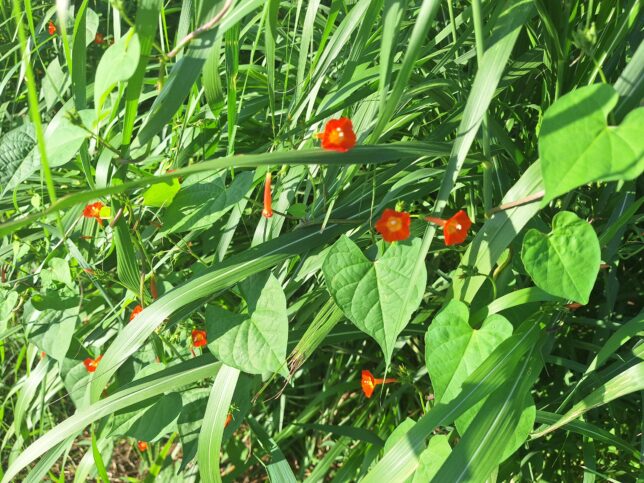
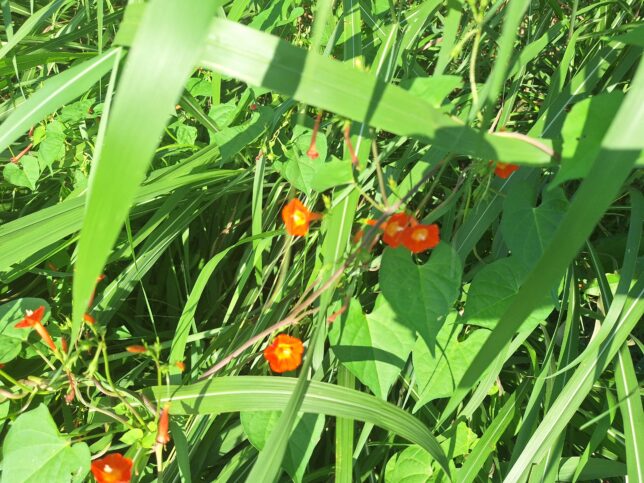
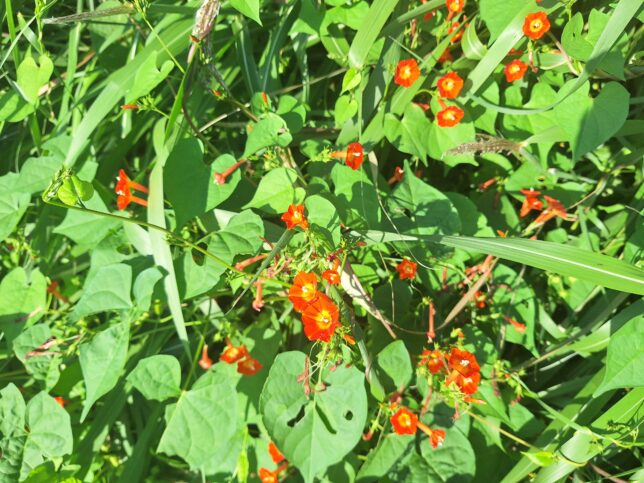
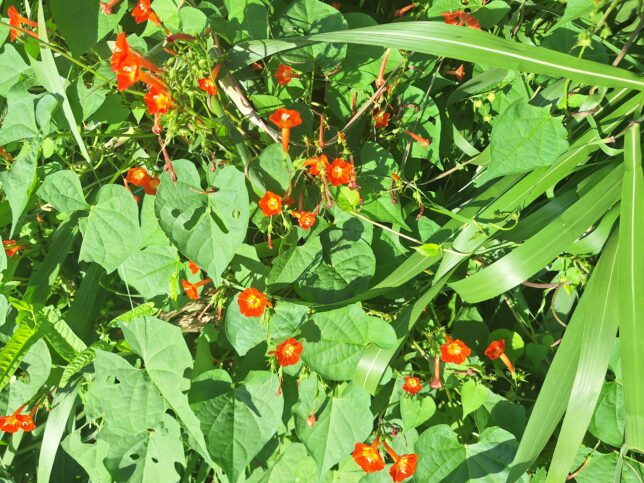
Red morning glory (Ipomoea coccinea), Arakawa River, Kofu, Yamanashi, 10/08/2025
https://en.wikipedia.org/wiki/Ipomoea_coccinea
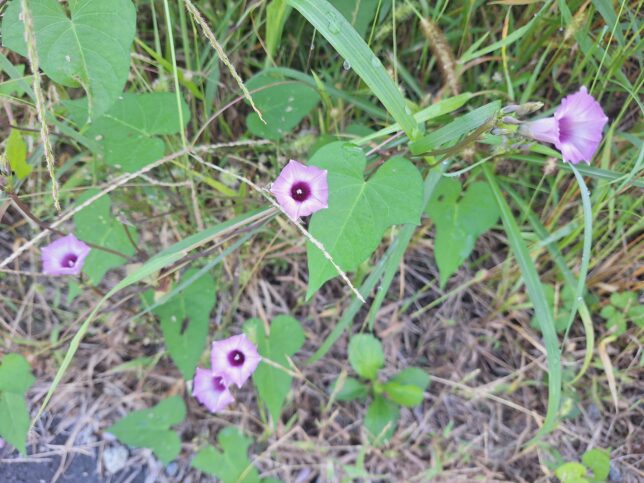
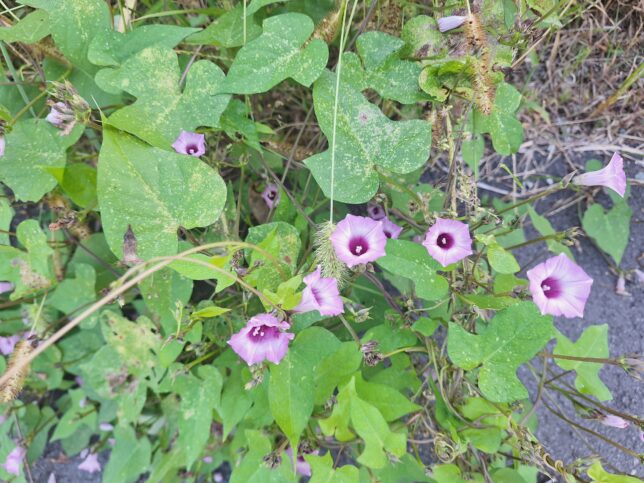
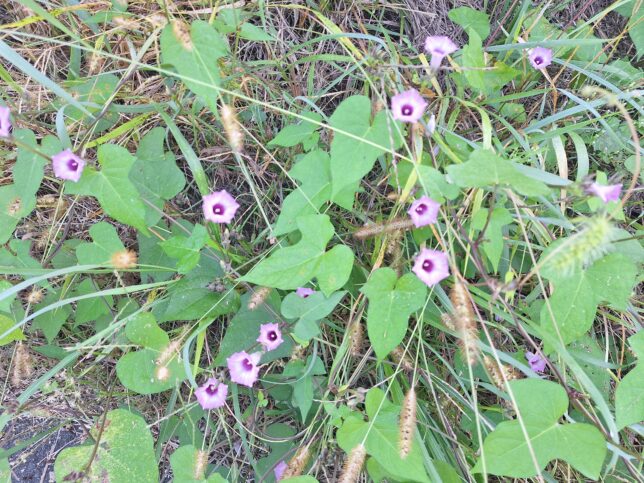
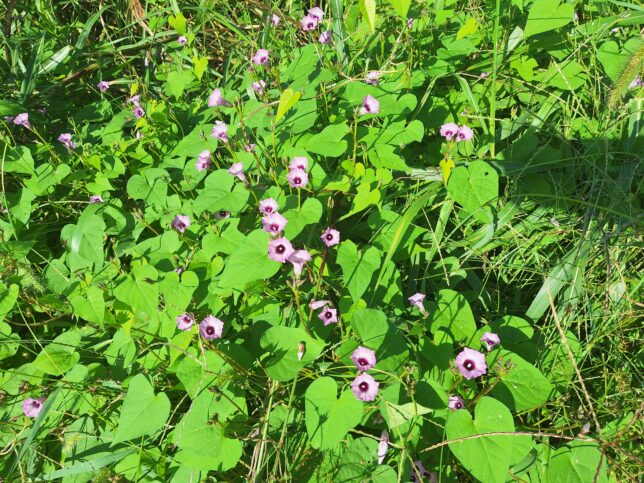
Littlebell (Ipomoea triloba), Arakawa River, Kofu, Yamanashi, 10/08/2025
https://en.wikipedia.org/wiki/Ipomoea_triloba
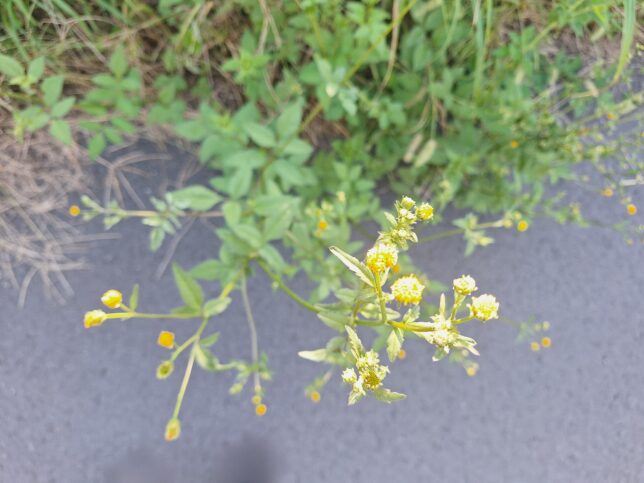
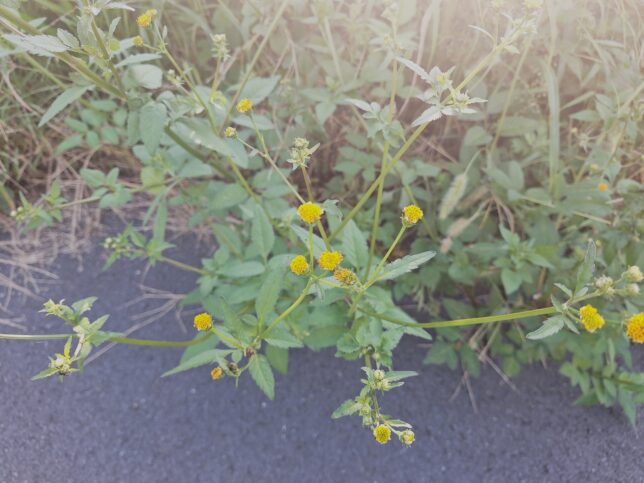
Cobbler’s pegs (Bidens pilosa var. pilosa), Arakawa River, Kofu, Yamanashi, 10/08/2025
https://www.nies.go.jp/biodiversity/invasive/DB/detail/80460e.html; https://weeds.brisbane.qld.gov.au/weeds/cobblers-pegs
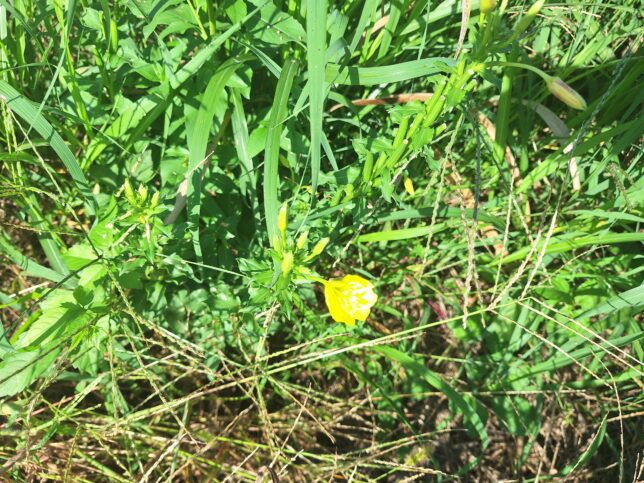
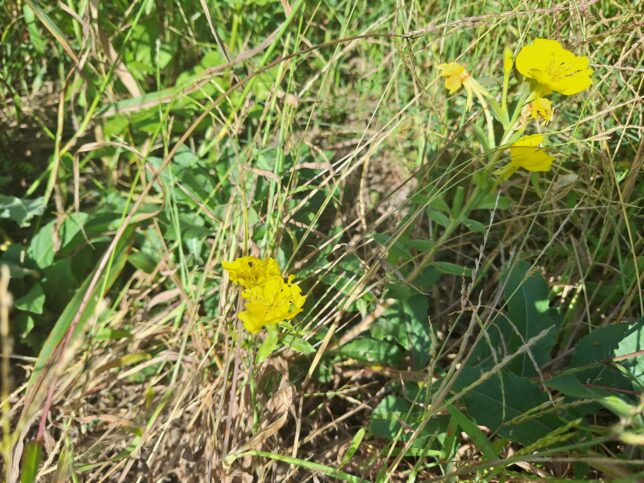
Common evening-primrose (Oenothera biennis), Arakawa River, Kofu, Yamanashi, 10/08/2025
https://en.wikipedia.org/wiki/Oenothera_biennis
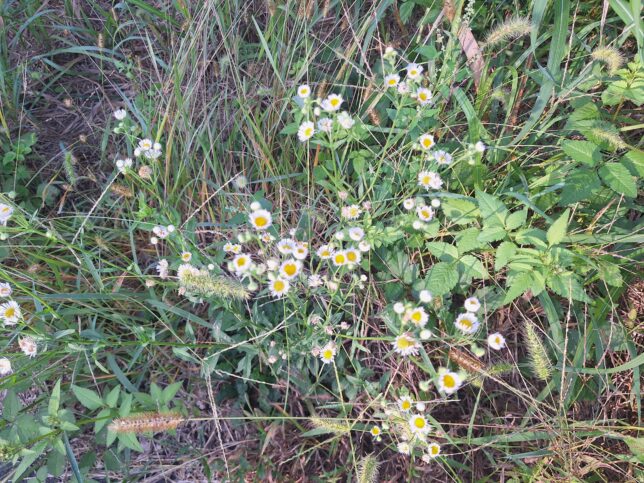
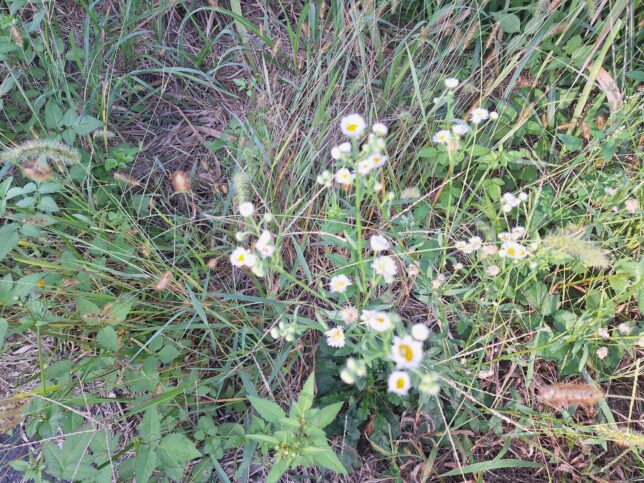
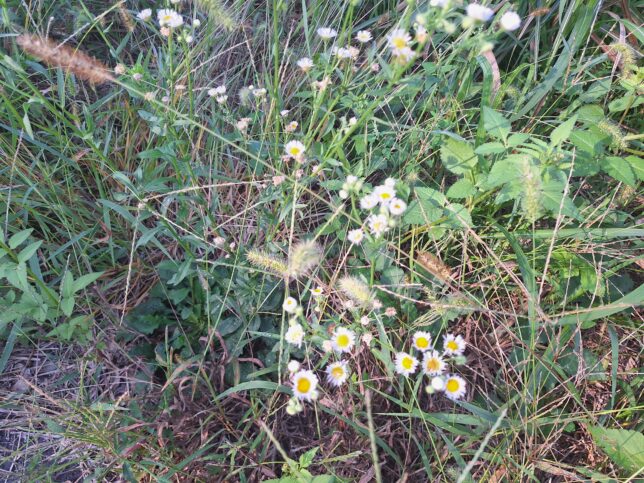
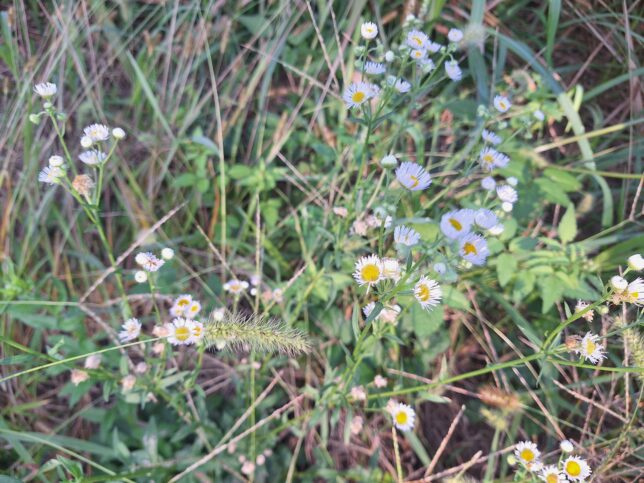
Prairie fleabane (Erigeron strigosus), Arakawa River, Kofu, Yamanashi, 10/08/2025
https://en.wikipedia.org/wiki/Erigeron_strigosus
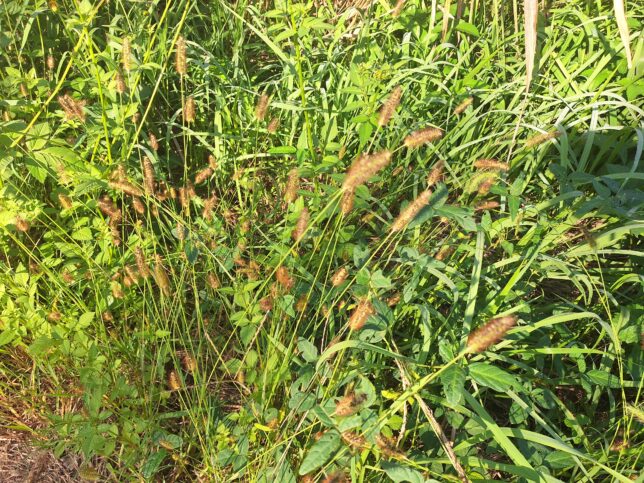
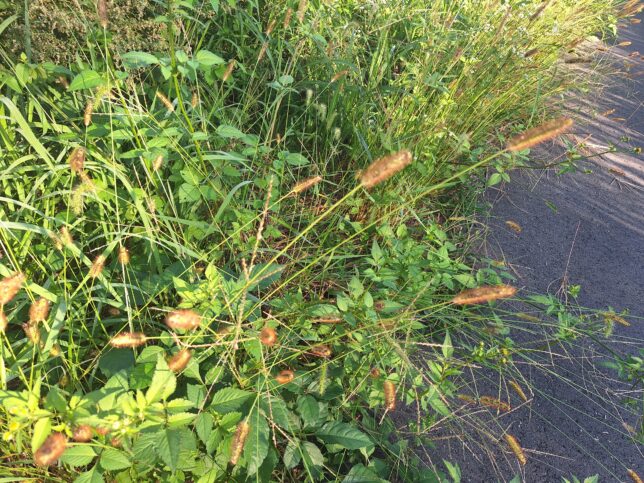
Yellow foxtail (Setaria pumila), Arakawa River, Kofu, Yamanashi, 10/08/2025
https://en.wikipedia.org/wiki/Setaria_pumila
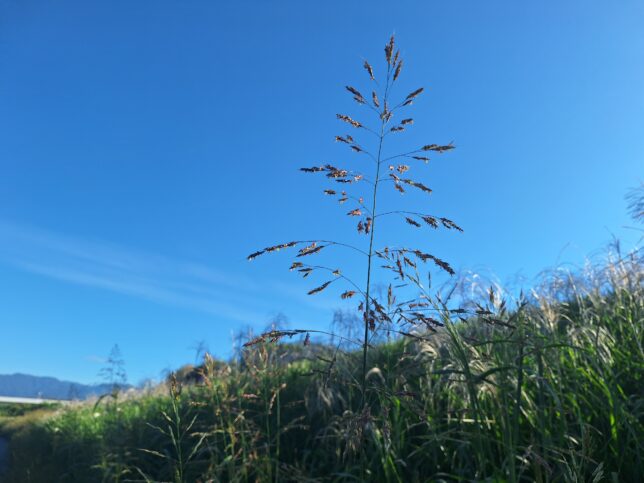
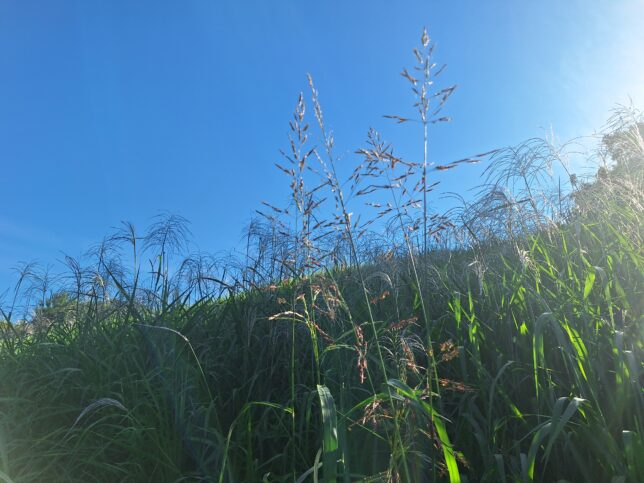
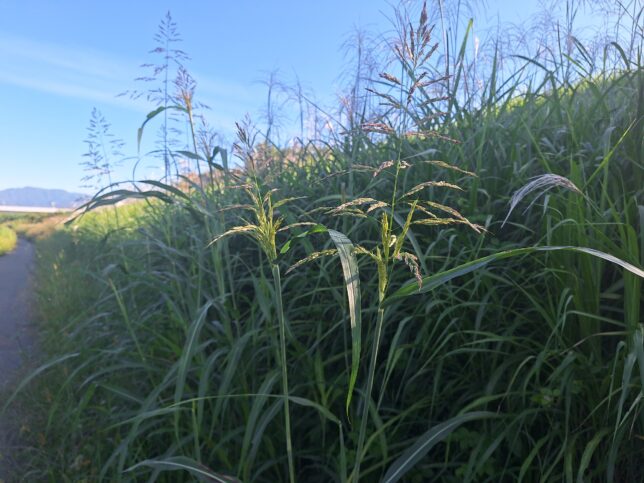
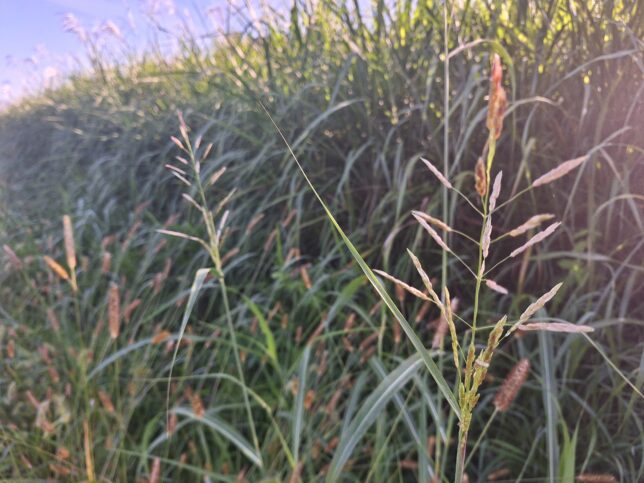
Johnson grass (Sorghum halepense), Arakawa River, Kofu, Yamanashi, 10/08/2025
https://en.wikipedia.org/wiki/Johnson_grass
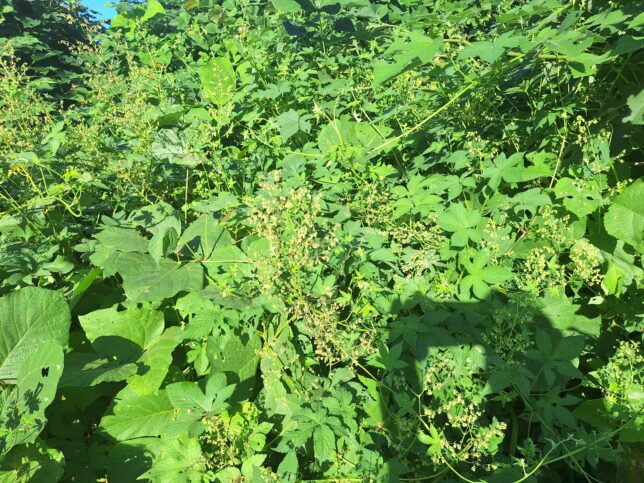
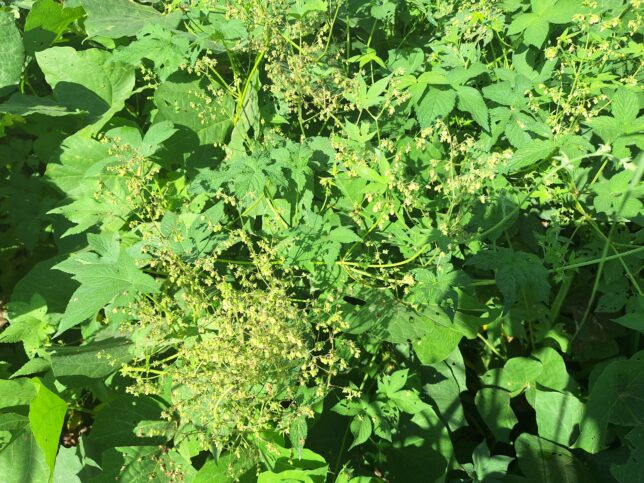
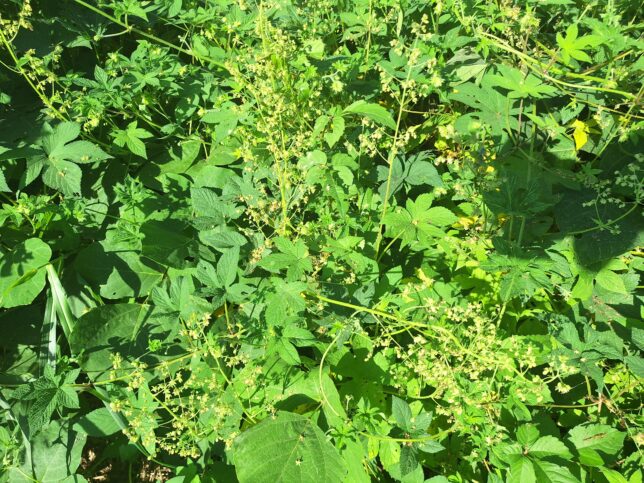
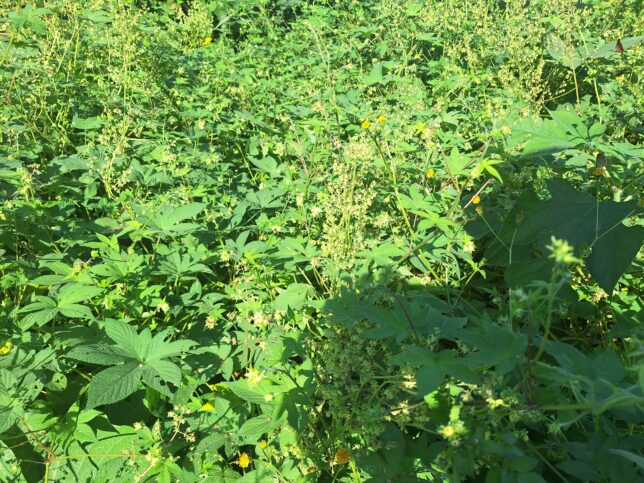
Japanese hop (Humulus japonicus), Arakawa River, Kofu, Yamanashi, 10/08/2025
https://en.wikipedia.org/wiki/Humulus_japonicus
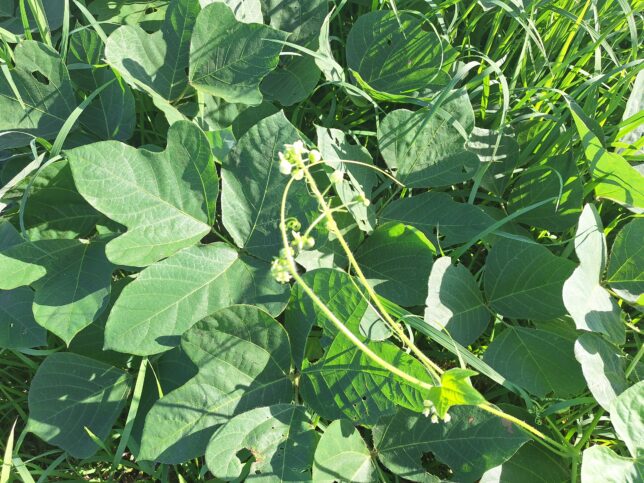
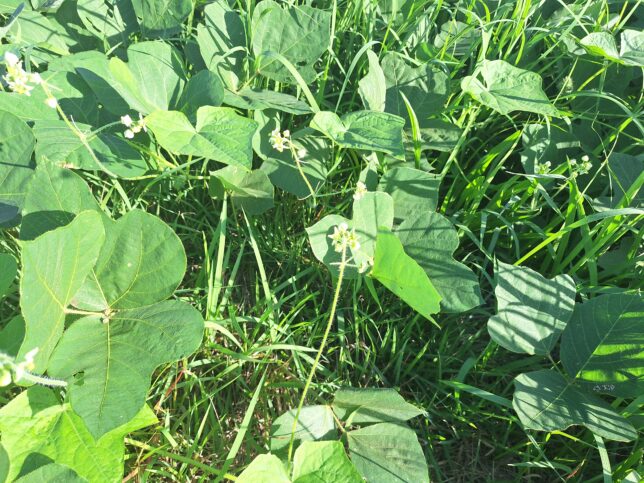
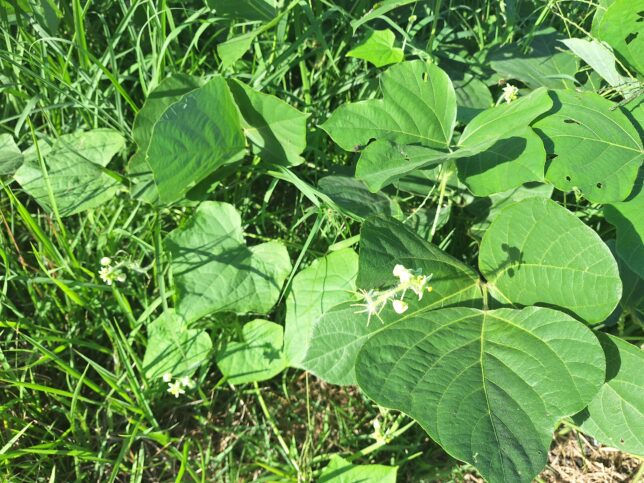
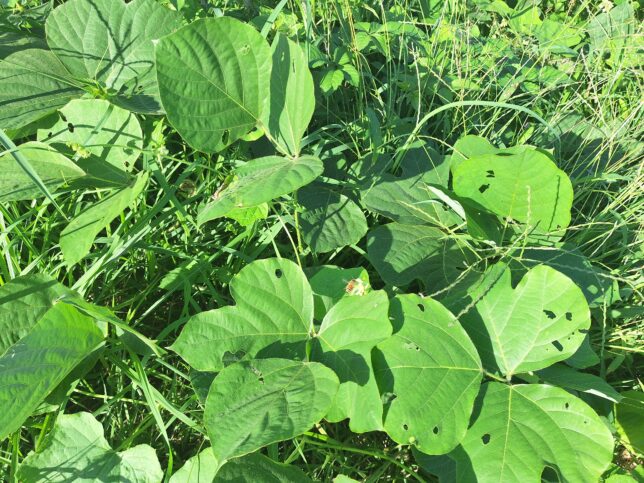
Kudzu vine (Pueraria montana var. lobata), Arakawa River, Kofu, Yamanashi, 10/08/2025
https://en.wikipedia.org/wiki/Pueraria_montana_var._lobata
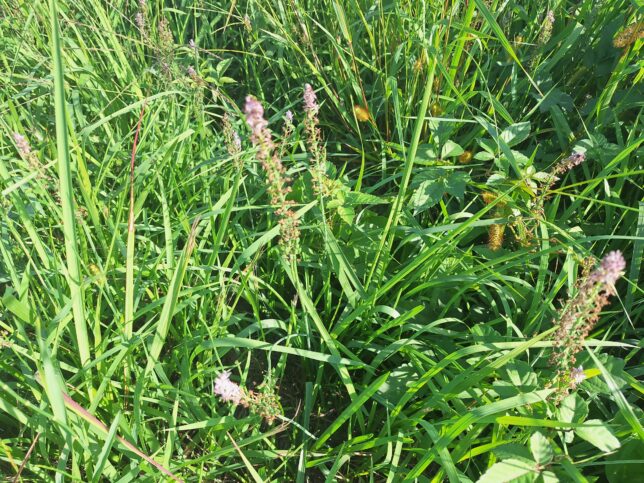
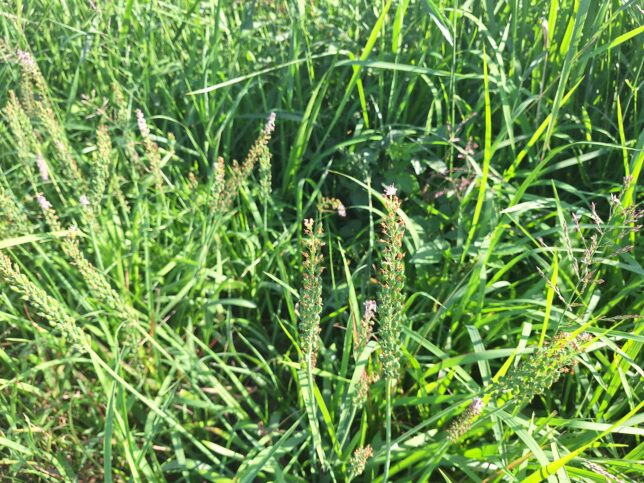
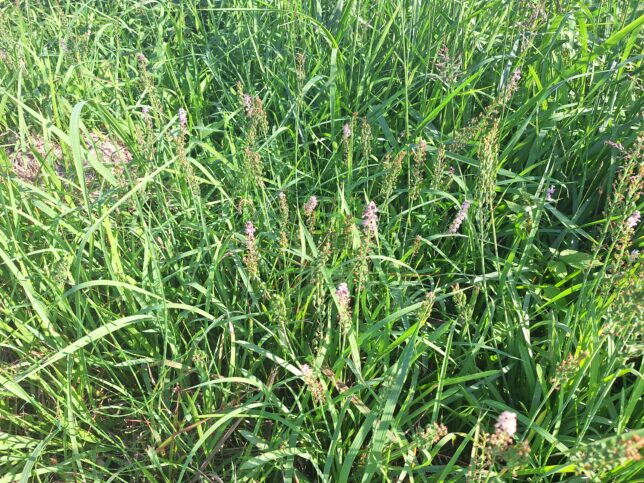
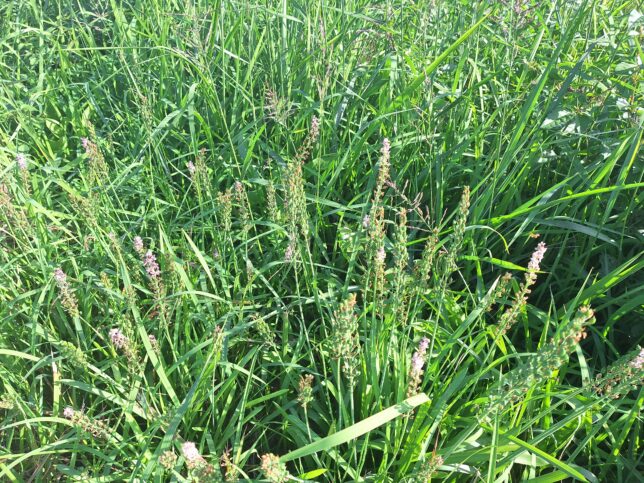
Japanese jacinth (Barnardia japonica), Arakawa River, Kofu, Yamanashi, 10/08/2025
https://en.wikipedia.org/wiki/Barnardia_japonica
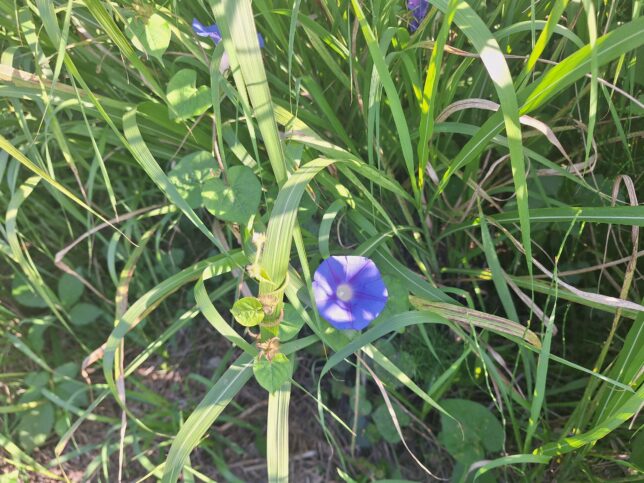
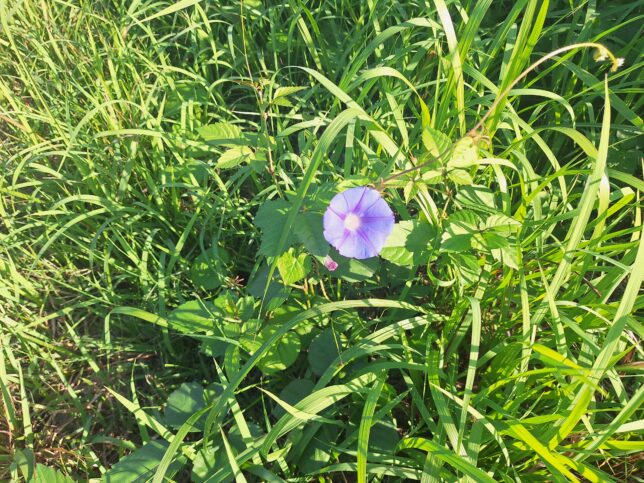
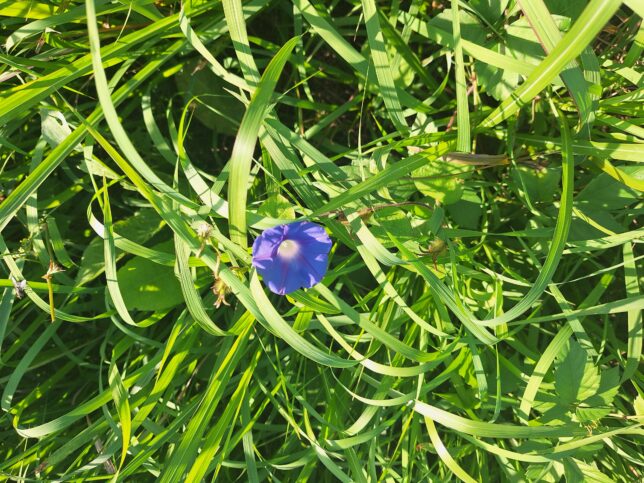
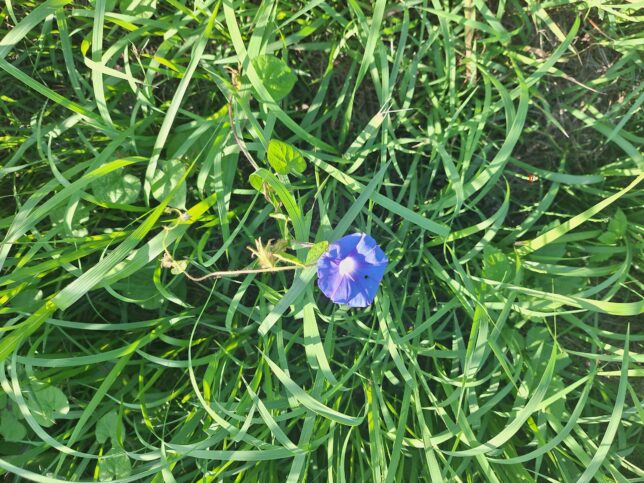
Japanese morning glory (Ipomoea nil), Arakawa River, Kofu, Yamanashi, 10/08/2025
https://en.wikipedia.org/wiki/Ipomoea_nil

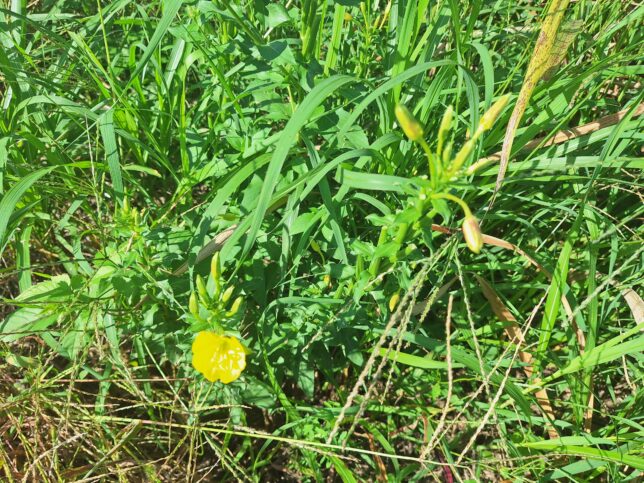
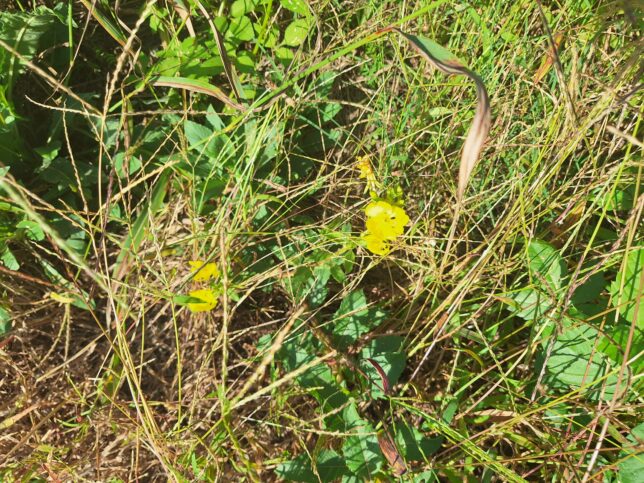

Common eveningprimrose (Oenothera biennis), Arakawa River, Kofu, Yamanashi, 10/08/2025
The port of Shimizu is located in Shimizu-ward in the city of Shizuoka, Shizuoka Prefecture, Japan. The port has several wharves and it is a busy and important one in Japan. It is known for its international trade, commercial fishing, and recent surge in luxury cruise ship arrivals.
https://www.mlit.go.jp/kankocho/cruise/detail/025/index.html; https://www.japan-guide.com/e/e6354.html; https://www.portofshimizu-intl.com/

A scene in Shimizu Port, Shimizu-ward, Shizuoka-city, Shizuoka, 10/06/2025


A research ship and a cruise ship, Shimizu Port, Shimizu-ward, Shizuoka-city, Shizuoka, 10/06/2025
The Aokigahara Forest is located alongside the western side of Lake Sai, one of the Fuji five lakes in the town of Kawaguchiko in Yamanashi Prefecture, Japan. It is situated at the northwestern base of Mount Fuji and is known for its dense trees and unique landscape formed over volcanic lava rock.
https://en.wikipedia.org/wiki/Aokigahara; https://www.japan.travel/en/spot/1335/; https://en.wikipedia.org/wiki/Fuji_Five_Lakes
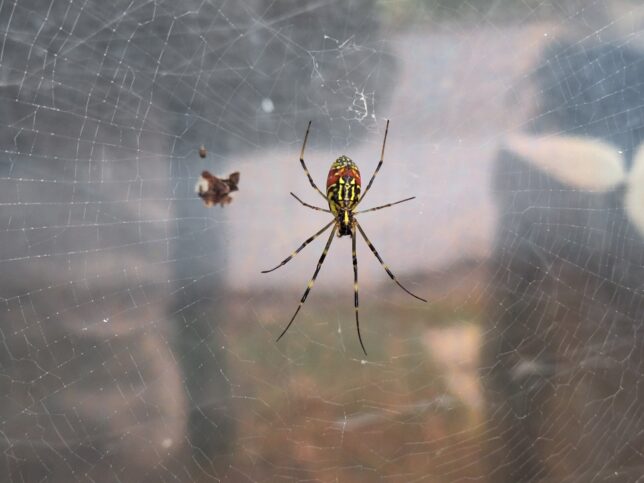
Joro-spider (Trichonephila clavata), Aokigahara Forest, Kawaguchiko, Yamanashi, 10/04/2025
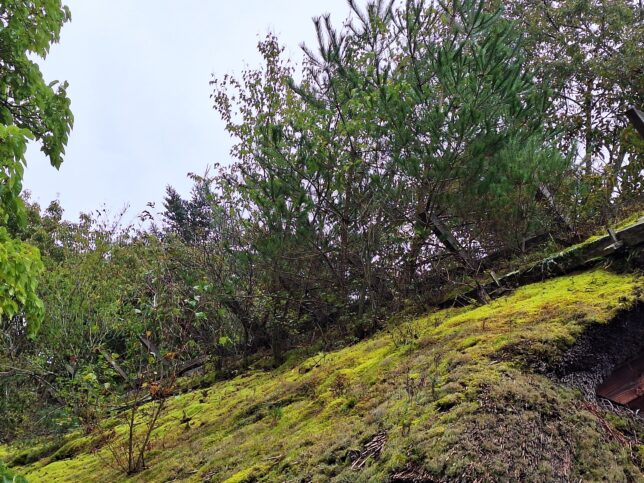
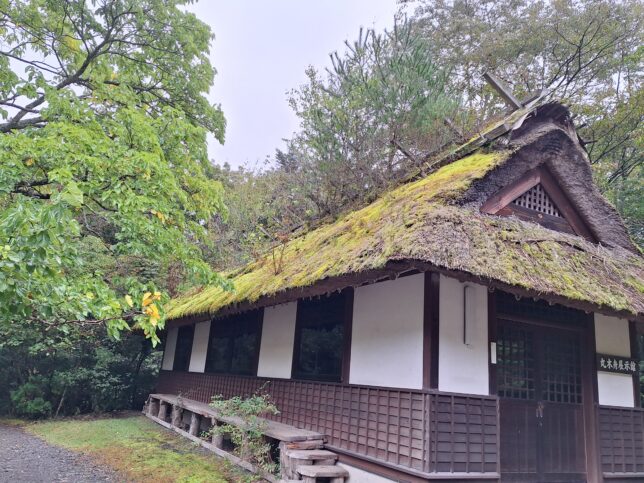
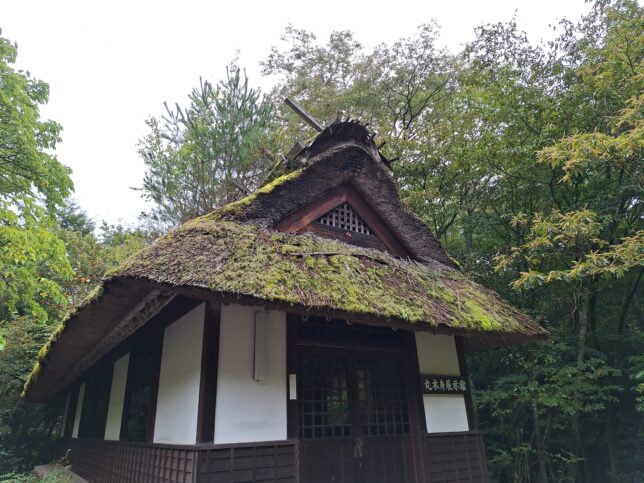
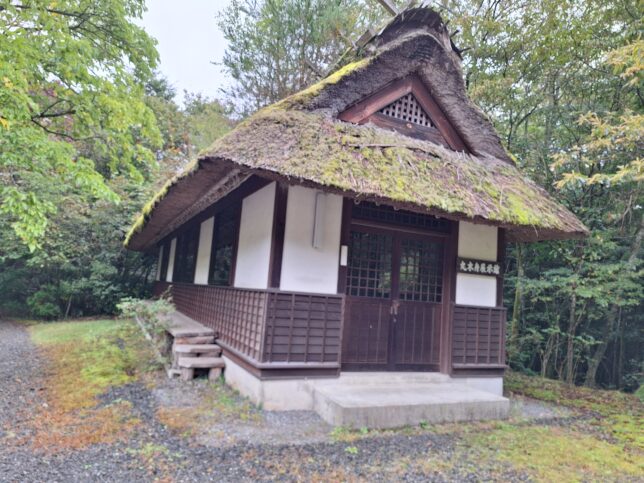
Trees and plants growing on the thatched roof of an old house, Aokigahara Forest, Kawaguchiko, Yamanashi, 10/04/2025
The Miho Peninsula is a small peninsula that faces Suruga Bay located in the city of Shizuoka in Shizuoka Prefecture, Japan. The location is well-known for its scenic Miho no Matsubara pine grove.
https://en.wikipedia.org/wiki/Miho_no_Matsubara; https://miho-no-matsubara.jp/lang/en/about/
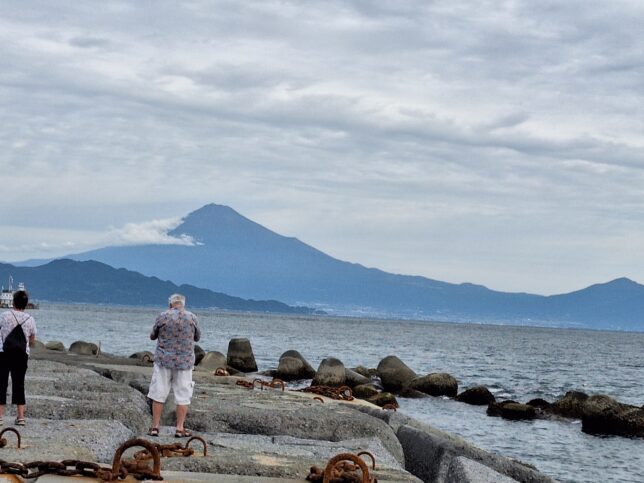

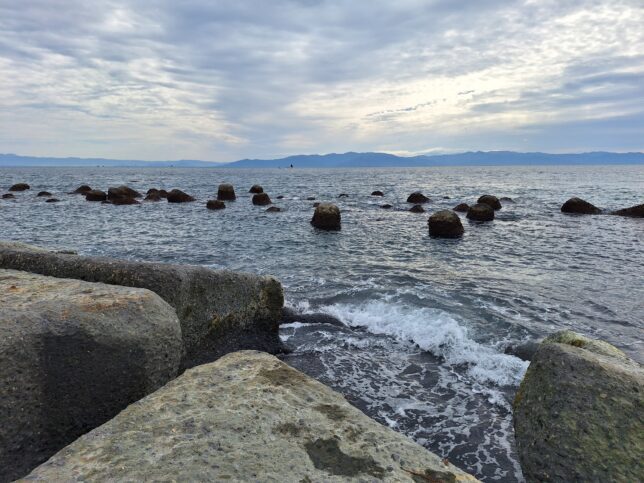
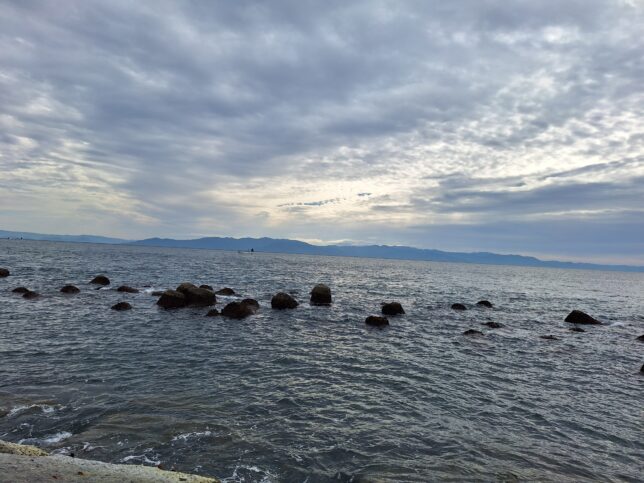
Suruga Bay, Shimizu-ward, Shizuoka-city, Shizuoka, 10/03/2025
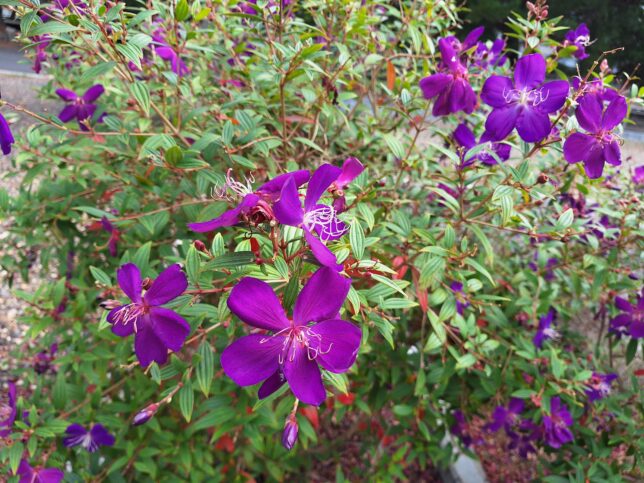
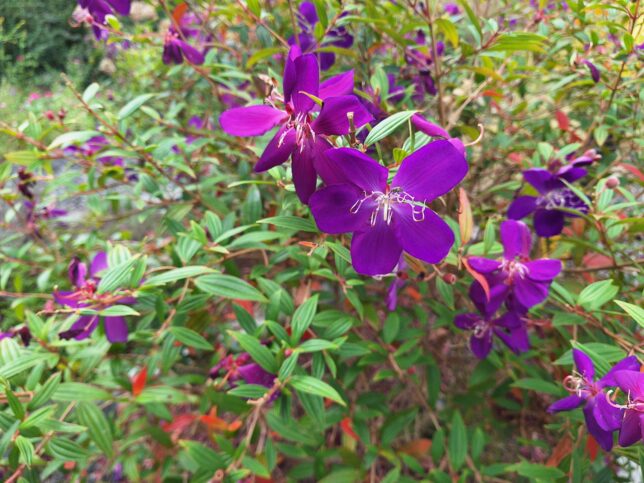
Glory bush (Pleroma urvilleanum), Shimizu-ward, Shizuoka-city, Shizuoka, 10/03/2025
https://en.wikipedia.org/wiki/Pleroma_urvilleanum
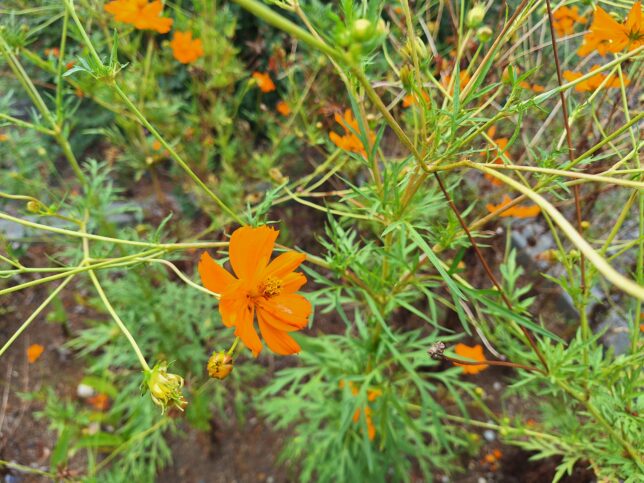
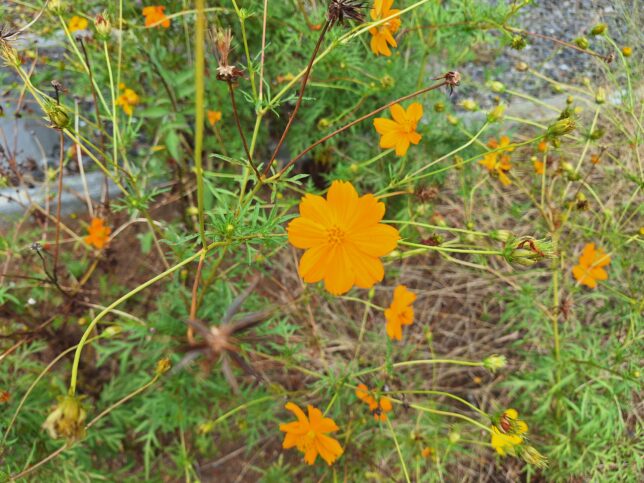
Sulfur cosmos (Cosmos sulphureus), Shimizu-ward, Shizuoka-city, Shizuoka, 10/03/2025
https://en.wikipedia.org/wiki/Cosmos_sulphureus
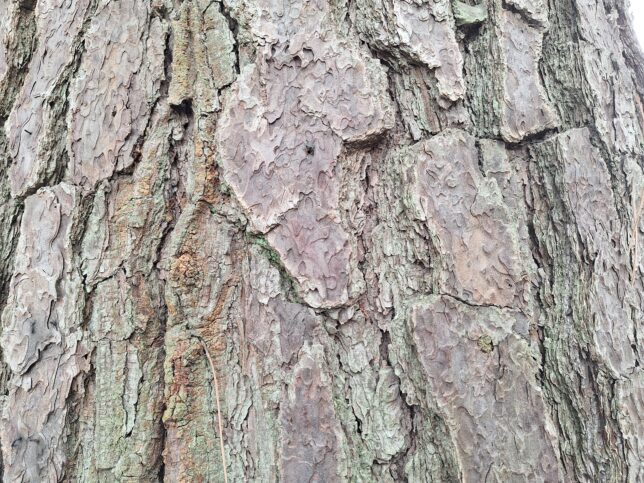
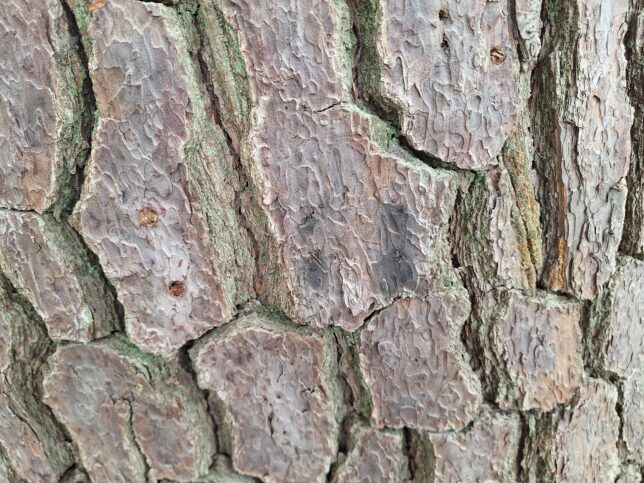
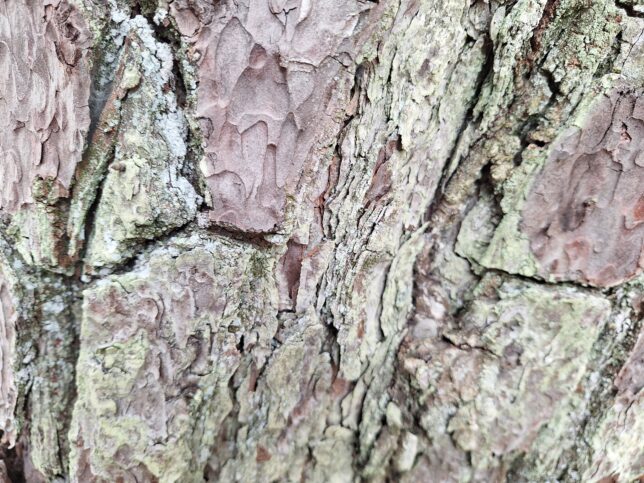
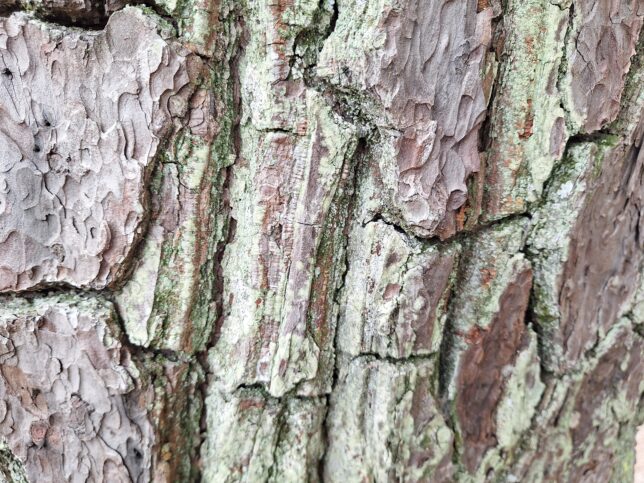
Bark of a Japanese black pine (Pinus thunbergii) tree, Shimizu-ward, Shizuoka-city, Shizuoka, 10/03/2025
You can pick and taste grapes (Vitis vinifera) here in Misaka Farm Grape House. There are several more farms like this in the Misaka area in the city of Fuefuki in Yamanashi Prefecture, Japan. Why don’t you enjoy the taste of autumn with grapes and have fun?
https://en.wikipedia.org/wiki/Vitis_vinifera; https://misakanoen.co.jp/?srsltid=AfmBOoqK0m-A5u4bpDtMHIp_93ZdnQ3EWZ4WsScHYULF53n7XjtVDr4k#
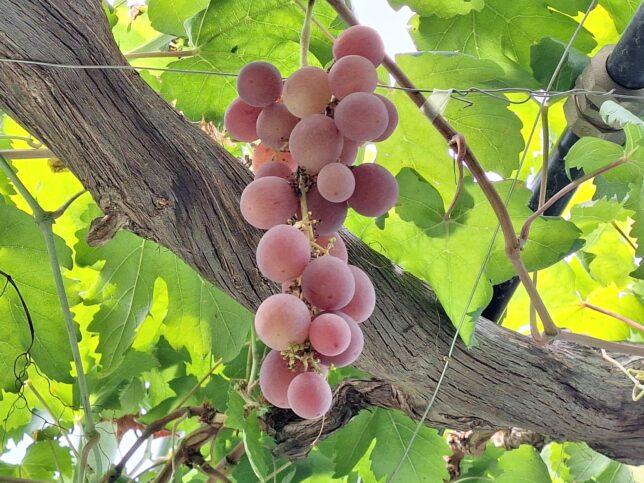
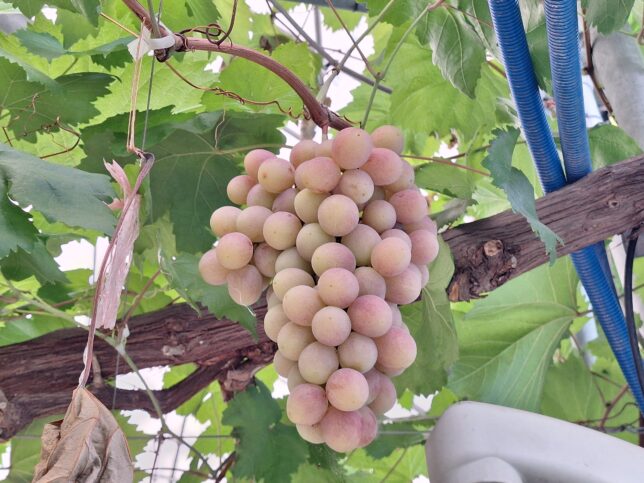
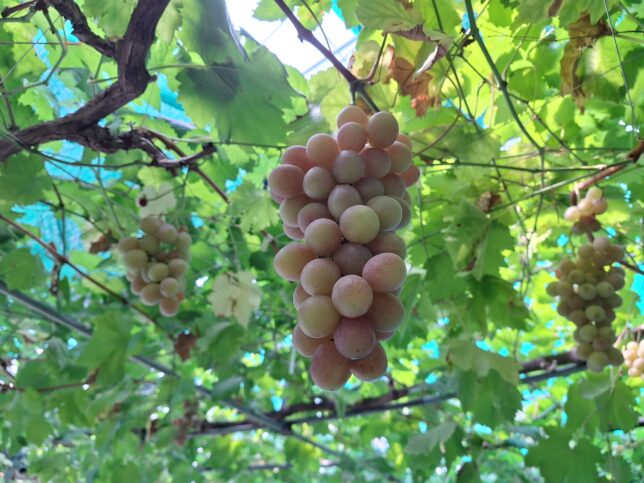
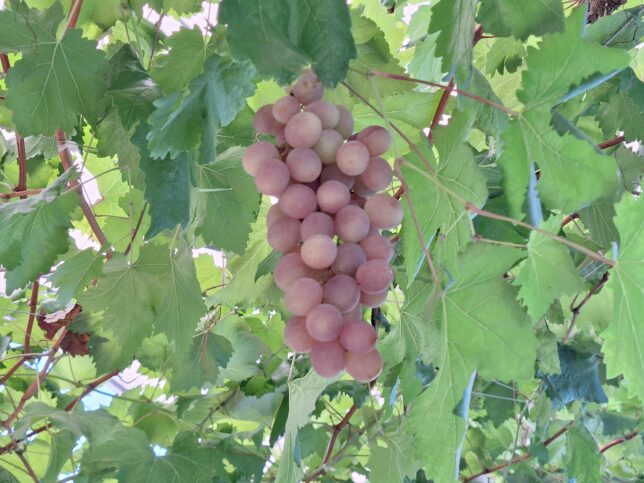
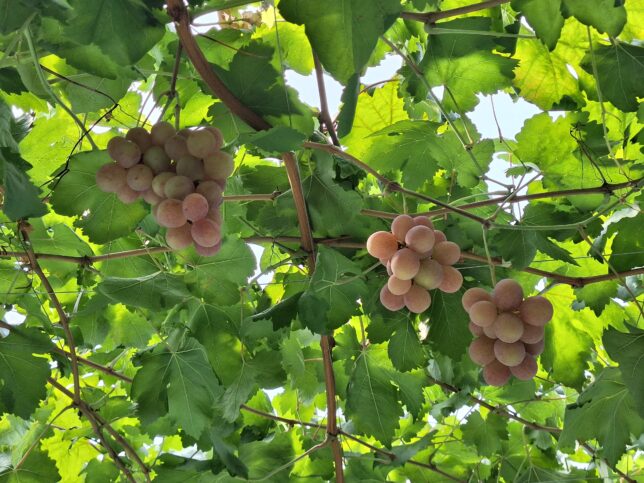
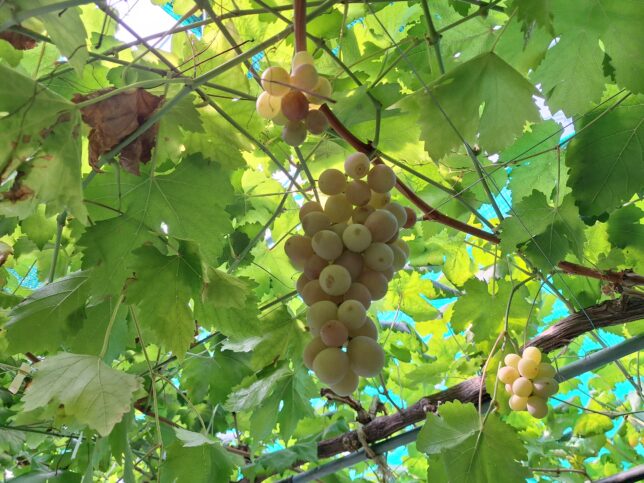
Grapes in Misaka Farm Grape House, Misaka, Fuefuki, Yamanashi, 9/28/2025
FYI
https://nihonmono.jp/en/article/30716/; https://nihonmono.jp/en/article/31402/; https://www.jstage.jst.go.jp/article/jsbbs/66/1/66_34/_html/-char/ja; https://www.fao.org/4/x6897e/x6897e07.htm; https://en.wikipedia.org/wiki/Shine_Muscat; (In Japanese) https://dr-tomio.com/
Cosmos bipinnatus, commonly called the garden cosmos, is native to Mexico and parts of the southwestern United States. https://en.wikipedia.org/wiki/Cosmos_bipinnatus; https://en.wikipedia.org/wiki/Cosmos_(plant)
The section of National Route 254 in the Uchiyama area in the city of Saku, Nagano Prefecture is known as “Cosmos Road.” Approximately 40,000 cosmos flowers are planted along the roadside that bloom from early September each year. These cosmos flowers create a beautiful flower belt with pink, deep pink, and white varieties along the road, especially in mid-September when they are in full bloom. The flower belt stretches for approximately 9 km and creates a vibrant display that attracts visitors. The flowers were first planted by the members of Uchiyama senior citizens’ club in 1972; today, the scenic road is maintained by local residents. https://japantravel.navitime.com/en/area/jp/spot/02301-14421713/; (In Japanese) https://www.sakukankou.jp/sightseeing/kosumosu-kaidou/#
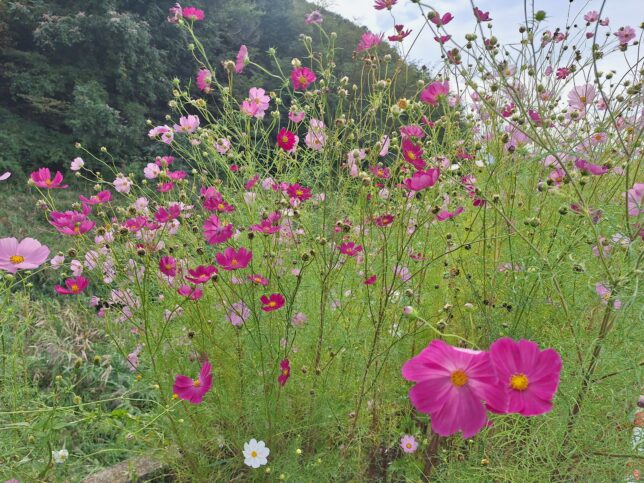
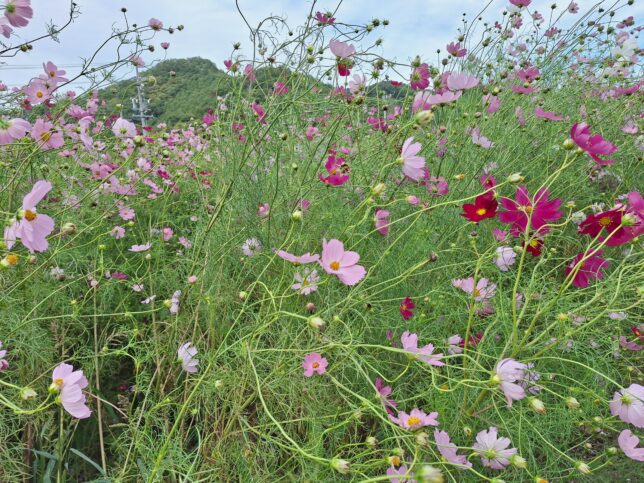
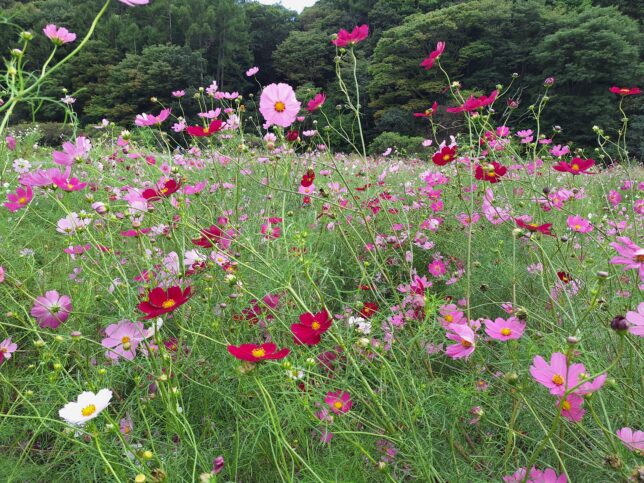
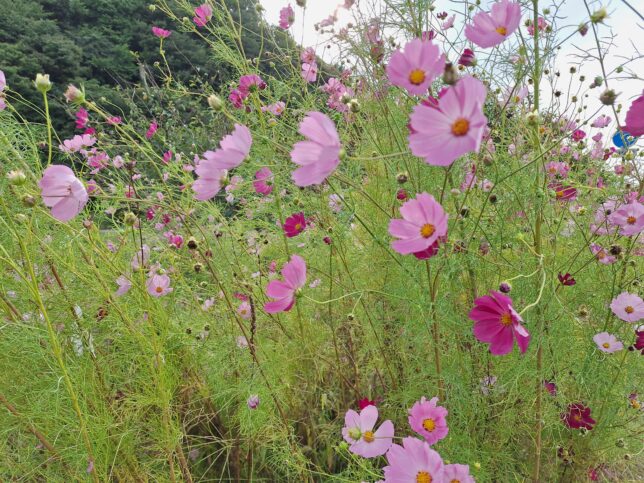
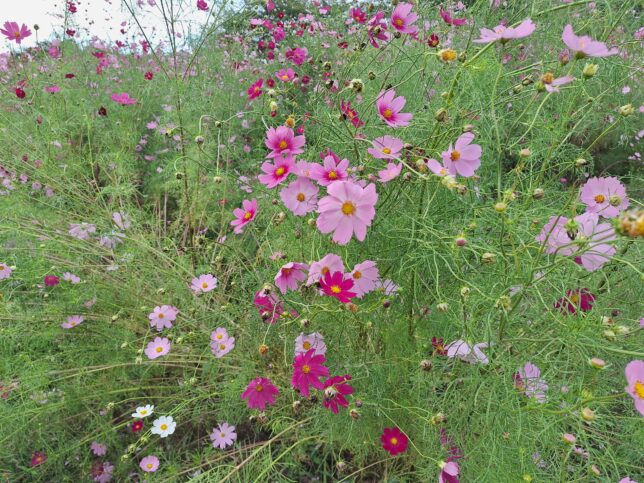
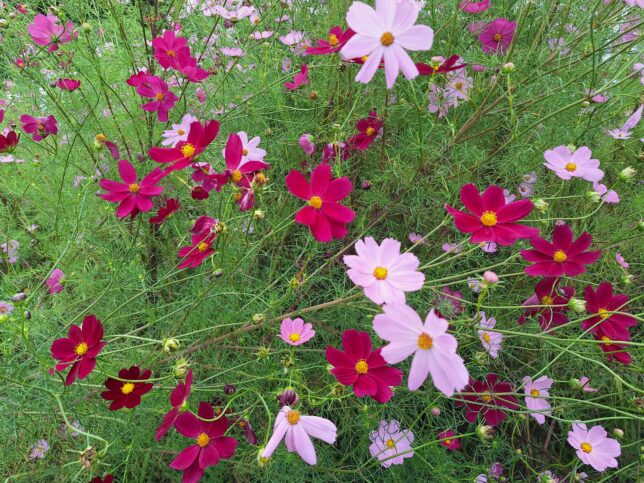
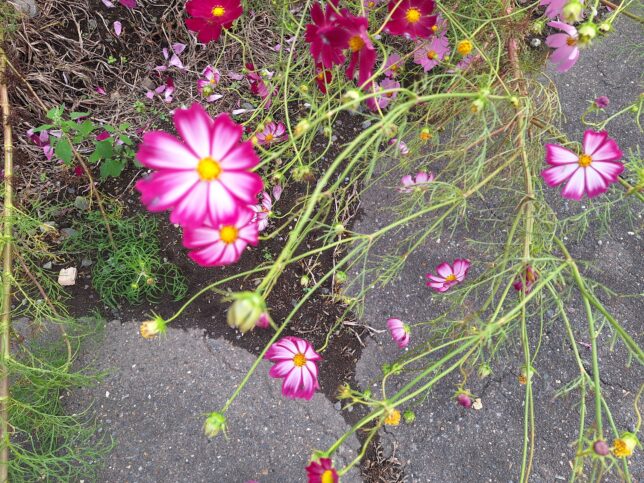
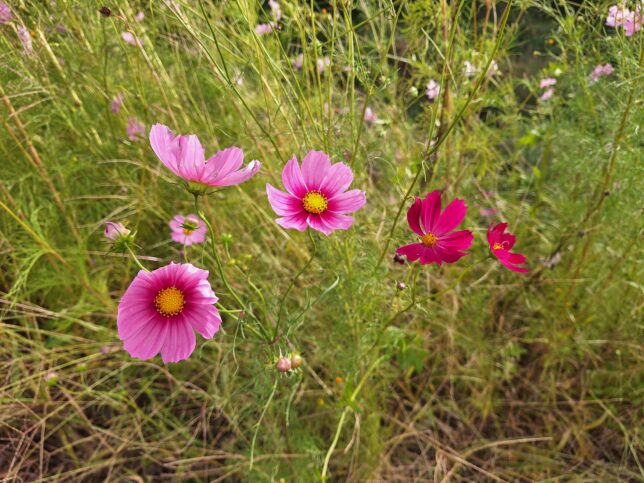
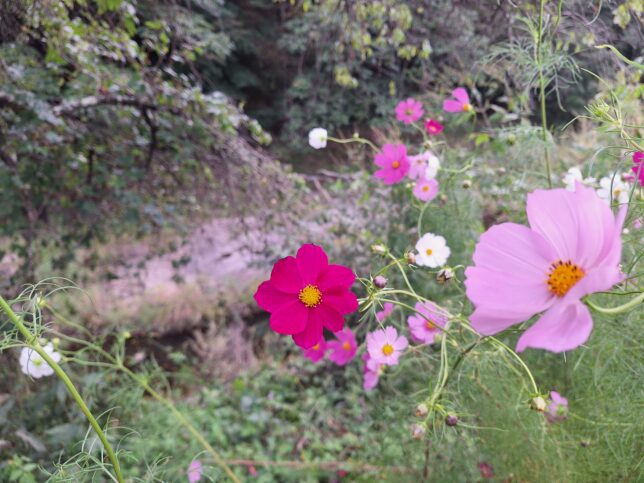
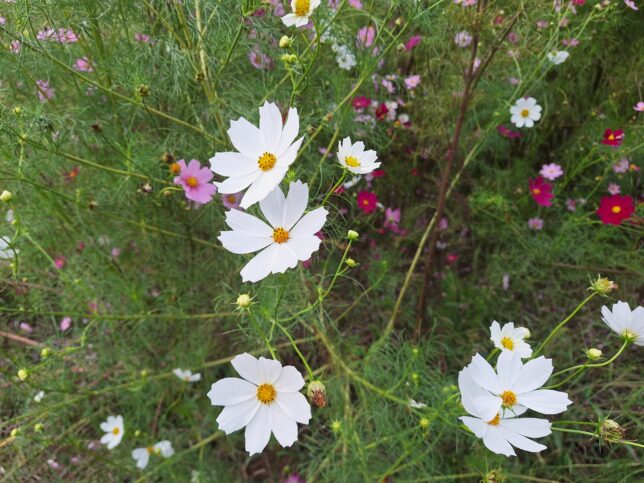
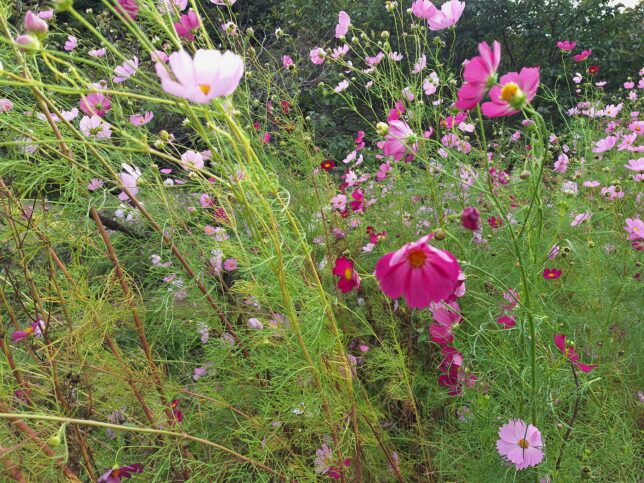
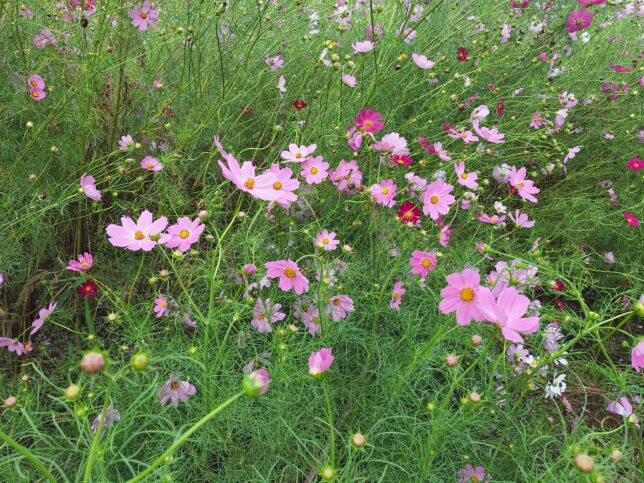
Cosmos flowers, Uchiyama, Saku, Nagano, 9/21/2025
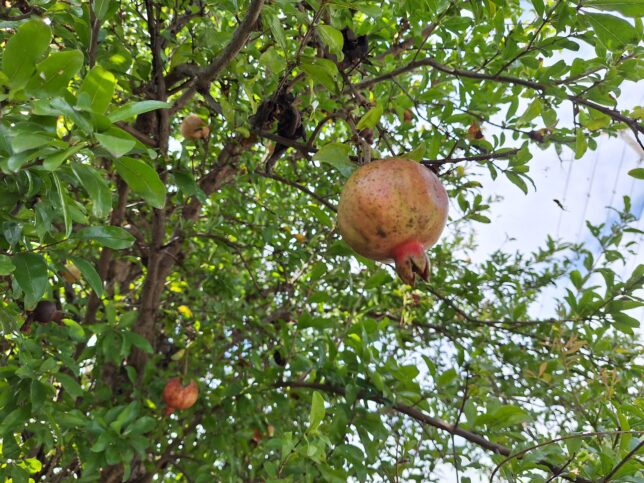
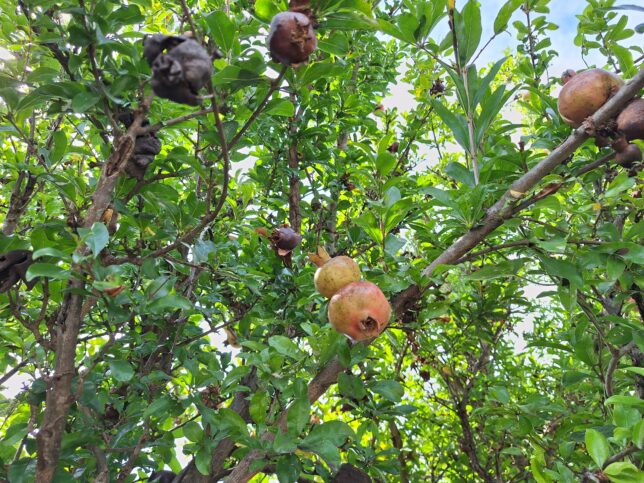
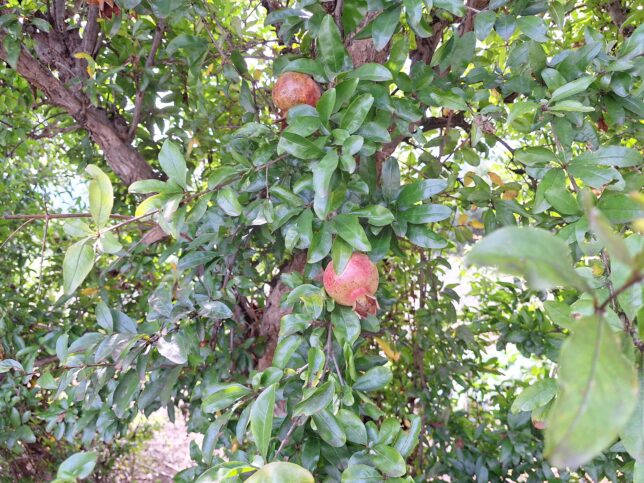
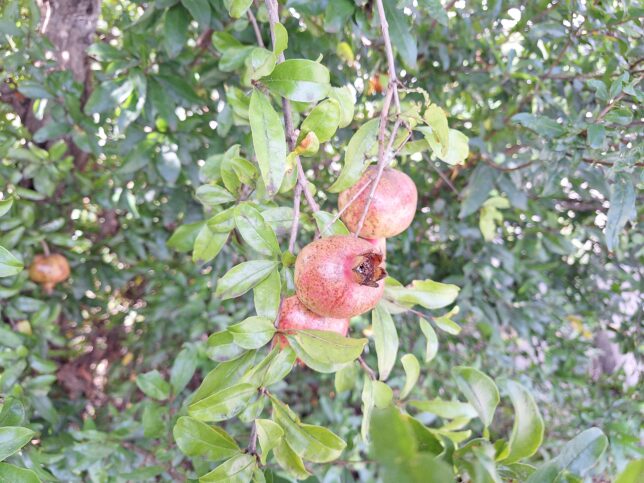
Pomegranate (Punica granatum), Uchiyama, Saku, Nagano, 9/21/2025
https://en.wikipedia.org/wiki/Pomegranate
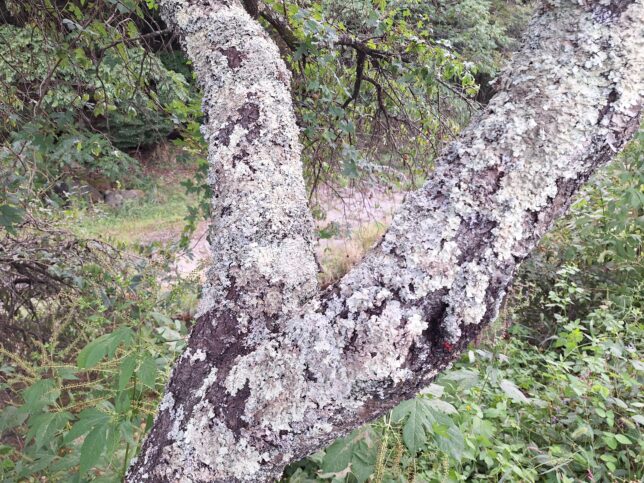
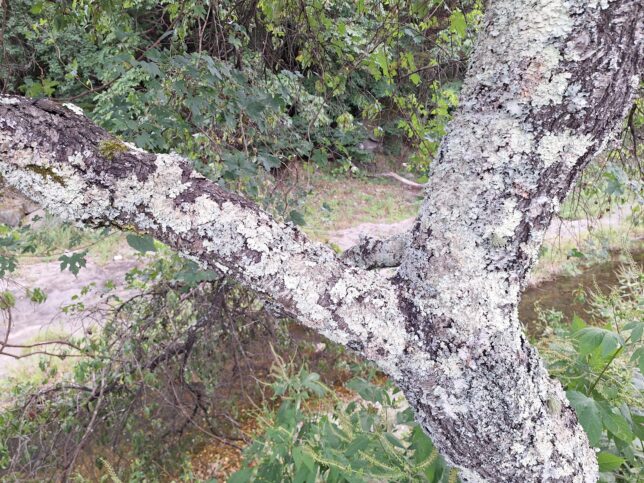
Palm ruffle lichen (Parmotrema tinctorum), Uchiyama, Saku, Nagano, 9/21/2025
https://en.wikipedia.org/wiki/Parmotrema_tinctorum; (Lichins in Chiba Prefecture) https://www.chiba-muse.or.jp/NATURAL/special/chii_boso/genus/parmotrema.html
Mount Yogai or Yogaiyama is located in the Sekisuiji district in the city of Kofu in Yamanashi Prefecture, Japan. It is a low mountain with the elevation of 770 meters (2,530 ft). The Takeda clan built a fortress in the mountain to barricade themselves in an emergency.
https://yamanashi–hiking100-jp.translate.goog/course/detail/89?_x_tr_sl=ja&_x_tr_tl=en&_x_tr_hl=en; https://en.wikipedia.org/wiki/Y%C5%8Dgaiyama_Castle; https://kofu-tourism.com/en/see-and-do/440; (In Japanese) https://www.rinya.maff.go.jp/kanto/yamanasi/invitation/pdf/map.pdf
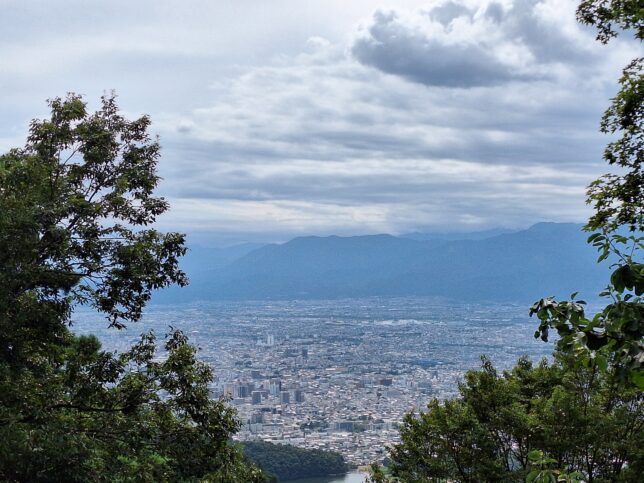
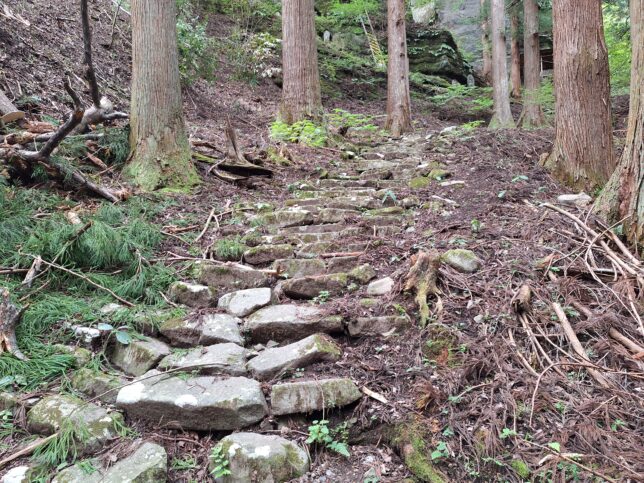
Looking the Kofu Basin and the trail to Mount Yogai, Sekisuiji, Kofu, Yamanashi, 9/22/2025
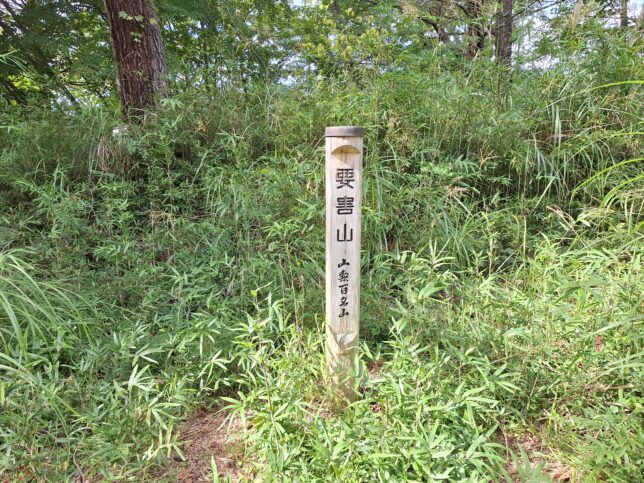
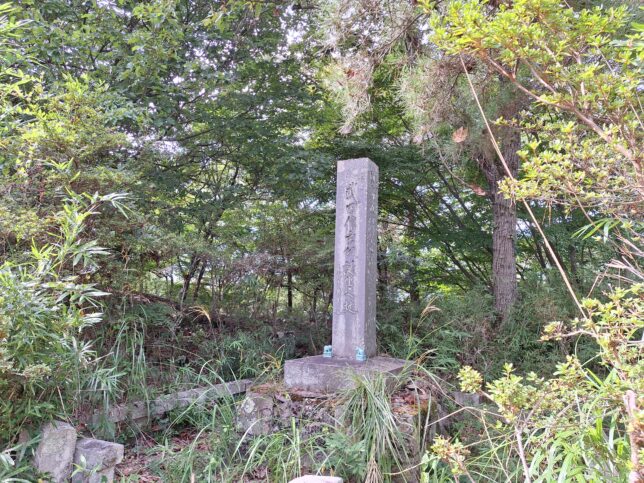
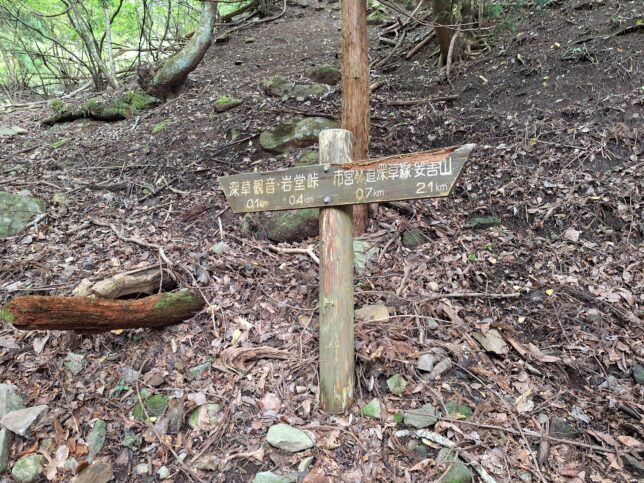
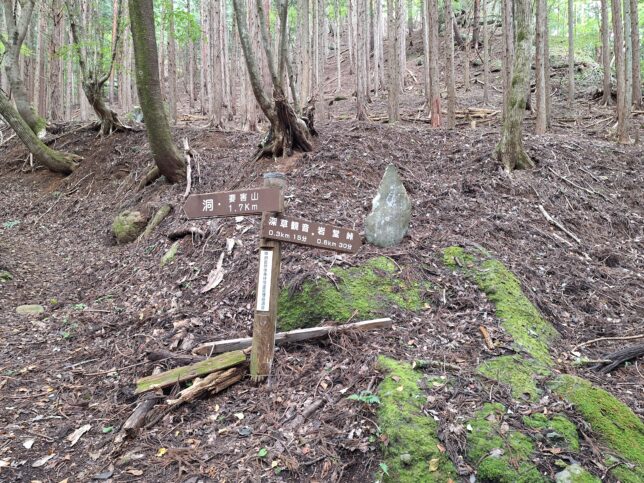
Mount Yogai and trail signs, Sekisuiji, Kofu, Yamanashi, 9/22/2025
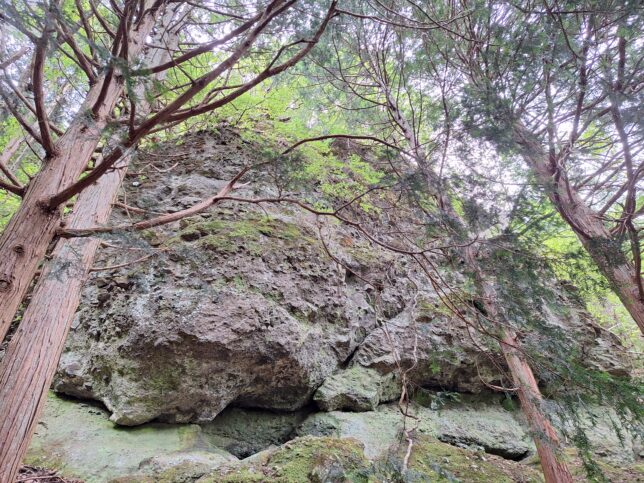
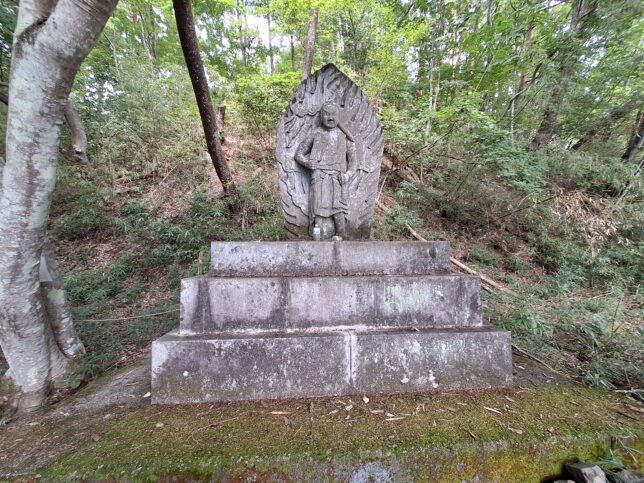
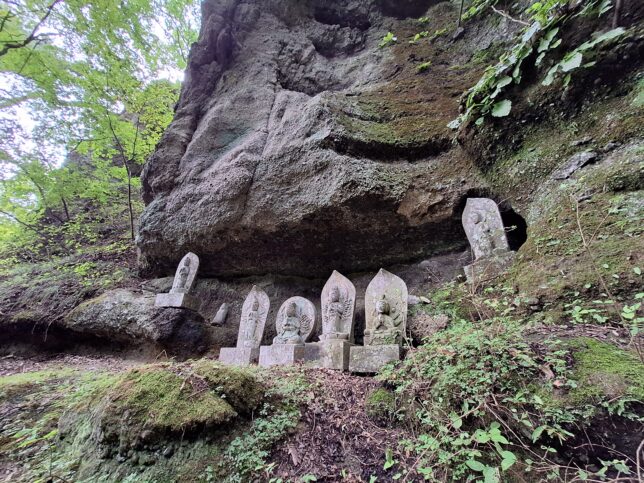
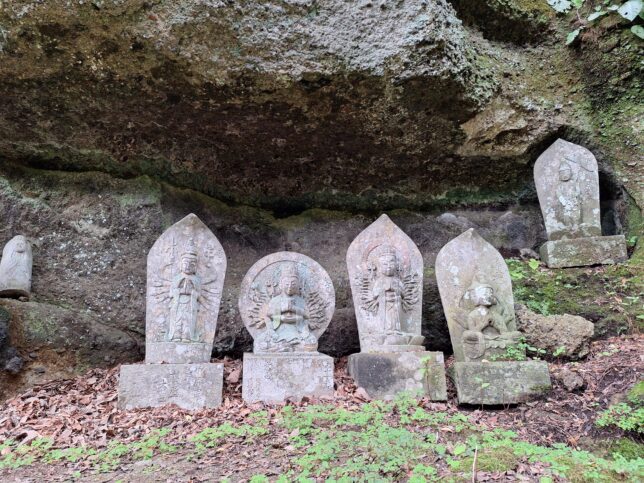
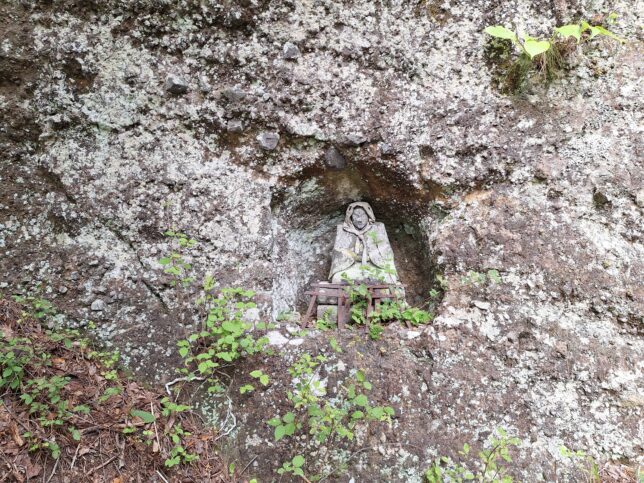
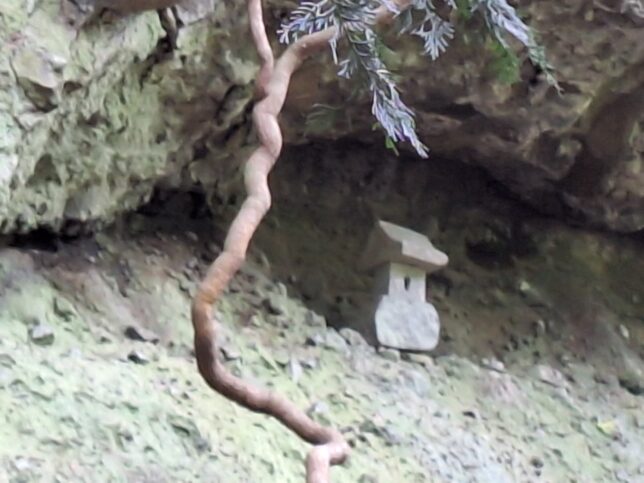
Sacred rock and statues of Takeda Fudoson (Achala Vidyaraja) and Kannon (Avalokiteśvara) and a shrine, Sekisuiji, Kofu, Yamanashi, 9/22/2025
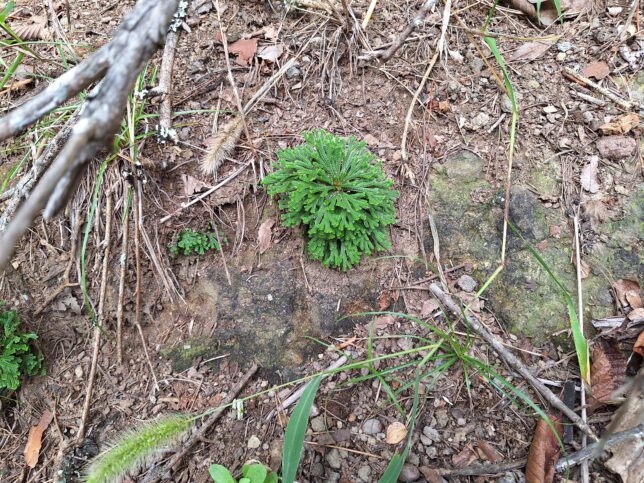
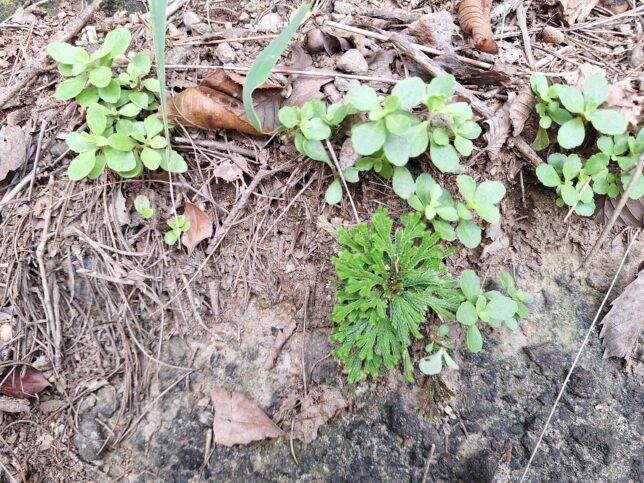
White Tip Spikemoss (Selaginella tamariscina), Sekisuiji, Kofu, Yamanashi, 9/22/2025
https://en.wikipedia.org/wiki/Selaginella_tamariscina
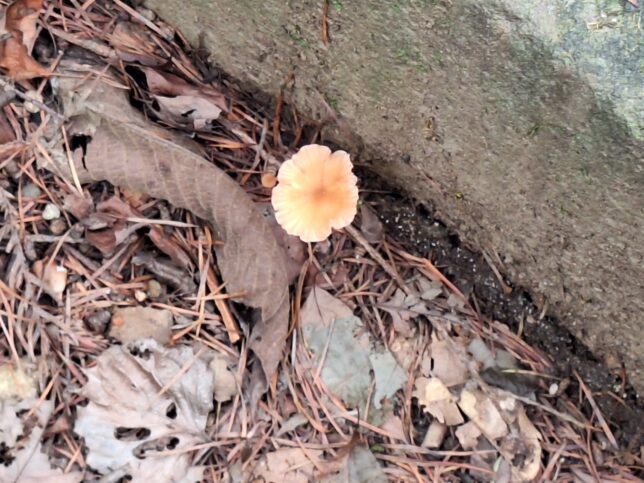
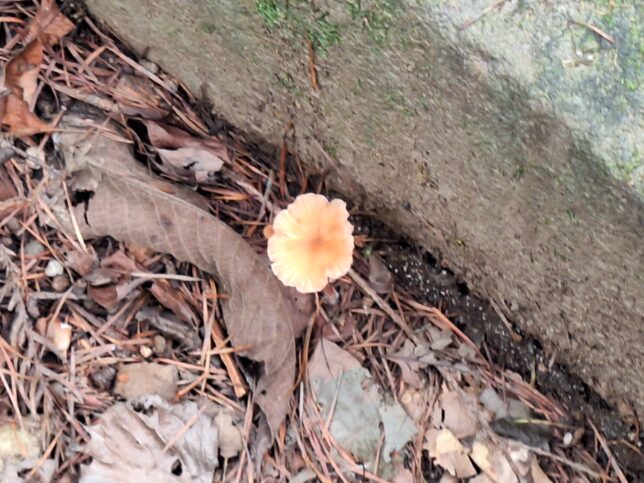
Marasmius maximus Hongo, Sekisuiji, Kofu, Yamanashi, 9/22/2025
(In Japanese) https://mikawanoyasou.org/kinoko/oohouraitake.htm; https://ja.wikipedia.org/wiki/%E3%82%AA%E3%82%AA%E3%83%9B%E3%82%A6%E3%83%A9%E3%82%A4%E3%82%BF%E3%82%B1
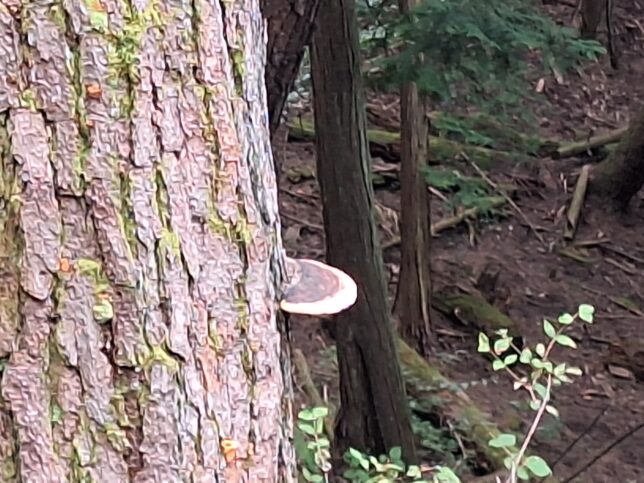
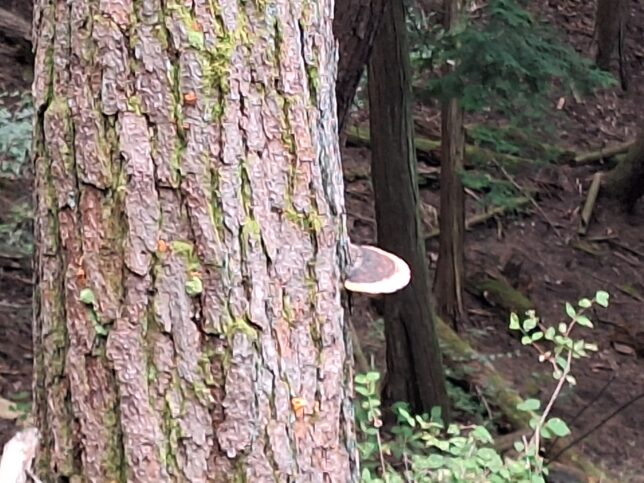
Birch polypore (Fomitopsis betulina), Sekisuiji, Kofu, Yamanashi, 9/22/2025
https://en.wikipedia.org/wiki/Fomitopsis_betulina; https://ncslg.cals.ncsu.edu/piptoporous-betulinus-bull-fr-karst/; https://www.jataff.or.jp/kinoko/0306/19.htm
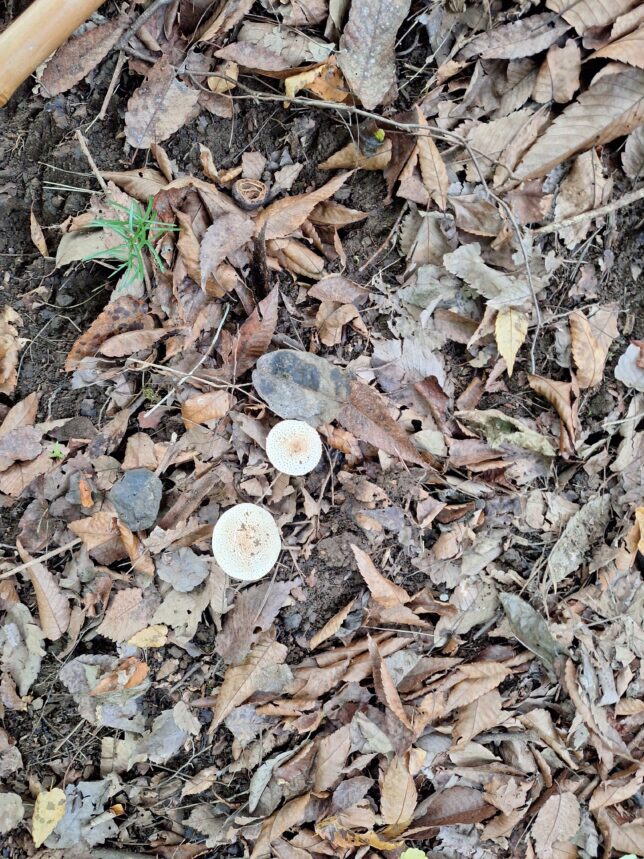
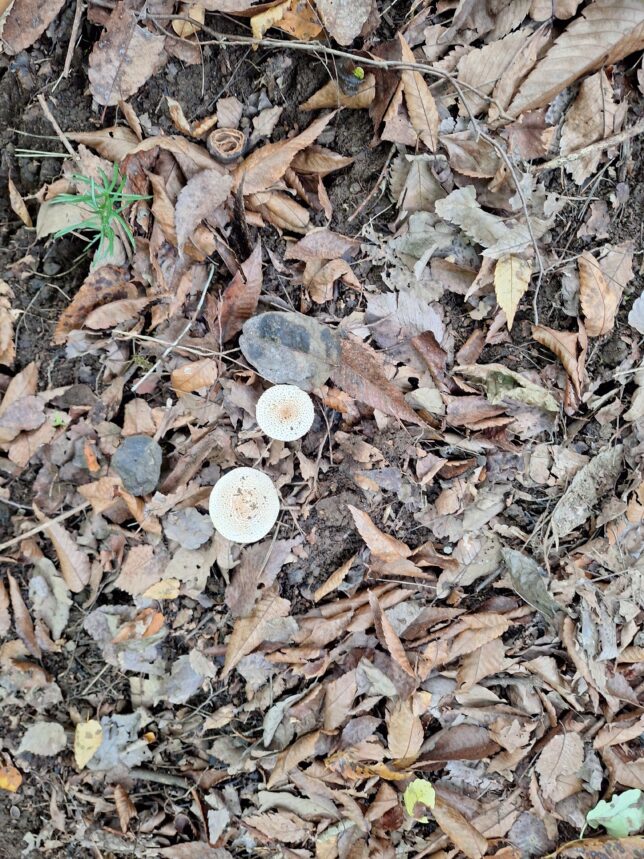
Stinking dapperling (Lepiota cristata), Sekisuiji, Kofu, Yamanashi, 9/22/2025
https://en.wikipedia.org/wiki/Lepiota_cristata; https://www.inaturalist.org/taxa/58694-Lepiota-cristata
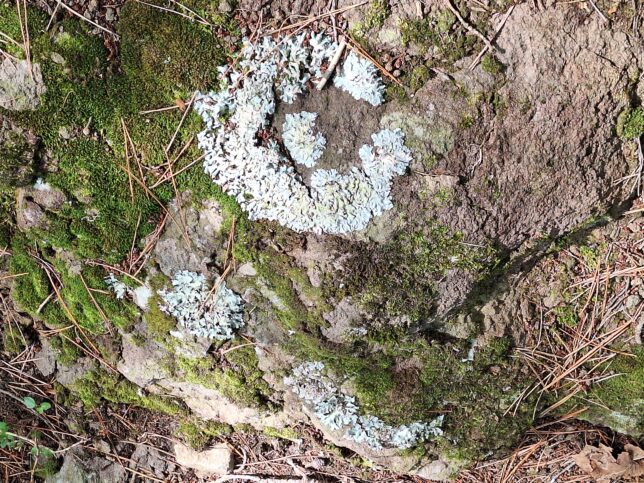
Physcia orientalis KASHIW, Sekisuiji, Kofu, Yamanashi, 9/22/2025
https://mikawanoyasou.org/tiirui/siromukadegoke.htm; https://www.chiba-muse.or.jp/NATURAL/chii_boso/genus/physcia.html